Here is some more artwork being thrown aside or revised for better pieces.
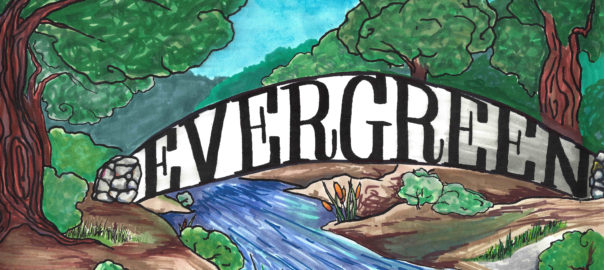
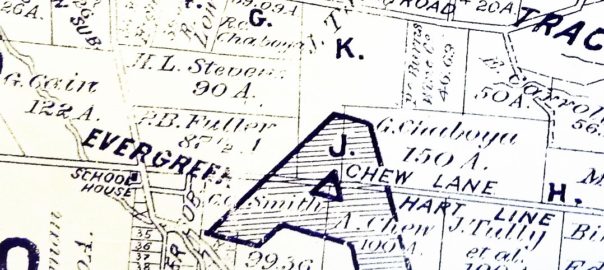
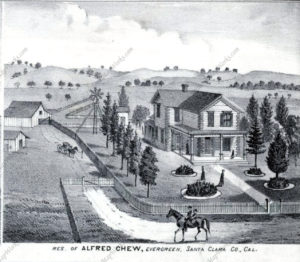
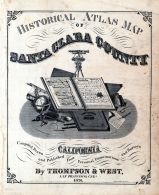 The people and places featured in books and publications back in the 1800’s were highly regarded as well as some of the only glimpses into other places at the time. Alfred Chew was made popular by the Thompson and West Altas published in 1876. Print was a limited medium, but made the exchange of information possible. Tales of the Western Frontier being tamed were becoming public knowledge as fruit, dried and canned, would reach the East Coast from Santa Clara Valley. The building of railroads brought many people to California through and after the Gold Rush, but also made the export of fruit and curiosity a real commodity.
The people and places featured in books and publications back in the 1800’s were highly regarded as well as some of the only glimpses into other places at the time. Alfred Chew was made popular by the Thompson and West Altas published in 1876. Print was a limited medium, but made the exchange of information possible. Tales of the Western Frontier being tamed were becoming public knowledge as fruit, dried and canned, would reach the East Coast from Santa Clara Valley. The building of railroads brought many people to California through and after the Gold Rush, but also made the export of fruit and curiosity a real commodity.
 Images of Santa Clara Valley were published for the whole world to delight in, along with our bountiful produce in the Valley of Heart’s Delight. This would’ve also served as a tourism guide of landmarks to see when visiting the area. Evergreen and Silver Creek were located in the Rancho Yerba Buena Survey, eventually becoming the whole of Evergreen. The associated map for the above photo is to the right, from Thompson and West’s 1876 Atlas with Alfred Chew’s residence featured. Fitting, the Survey of mention is in green.
Images of Santa Clara Valley were published for the whole world to delight in, along with our bountiful produce in the Valley of Heart’s Delight. This would’ve also served as a tourism guide of landmarks to see when visiting the area. Evergreen and Silver Creek were located in the Rancho Yerba Buena Survey, eventually becoming the whole of Evergreen. The associated map for the above photo is to the right, from Thompson and West’s 1876 Atlas with Alfred Chew’s residence featured. Fitting, the Survey of mention is in green.
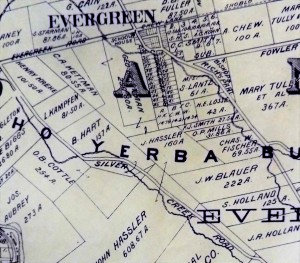 As you can see from this 1890 map to the left, before the turn of the century, Aborn Road was known as Evergreen Road west of White Road and San Felipe Road. To the East of San Felipe Road, the heavily driven Evergreen artery Aborn Road was known as Chew Lane. The Chew property is also featured here in the 1890 map at the top right corner along Chew Lane. That got me chewing on who Alfred Chew was.
As you can see from this 1890 map to the left, before the turn of the century, Aborn Road was known as Evergreen Road west of White Road and San Felipe Road. To the East of San Felipe Road, the heavily driven Evergreen artery Aborn Road was known as Chew Lane. The Chew property is also featured here in the 1890 map at the top right corner along Chew Lane. That got me chewing on who Alfred Chew was.
 Mr. Alfred Chew (1834-1910) would do a little traveling from his Ohio home front before settling down. Young Alfred would come with his parents, Morris Rees Chew and Mathilda Crumley, to live in Illinois before traveling West on his own. In 1853, Alfred Chew would start his journey West with the Kirkpatrick Company, headed for Oregon and making the most out of getting lost at the Missouri River. Kirkpatrick didn’t immediately arrive in Oregon that time. Before becoming a farmer in Evergreen, Alfred would meander South into California. We know about Mr. Alfred Chew for his leadership in early California Statehood in different areas of the State. Alfred Chew would run cattle through Gilroy before he would suffer from typhoid fever. Before returning home to Illinois in 1860, Mr. Alfred Chew would pursue government posts, and surely a different type of occupation than he had before. He was the US Deputy Surveyor for San Luis Obispo County in the late 1850’s. Alfred Chew would return to Illinois and marry Margaret Kennedy, returning to Evergreen with his new bride.
Mr. Alfred Chew (1834-1910) would do a little traveling from his Ohio home front before settling down. Young Alfred would come with his parents, Morris Rees Chew and Mathilda Crumley, to live in Illinois before traveling West on his own. In 1853, Alfred Chew would start his journey West with the Kirkpatrick Company, headed for Oregon and making the most out of getting lost at the Missouri River. Kirkpatrick didn’t immediately arrive in Oregon that time. Before becoming a farmer in Evergreen, Alfred would meander South into California. We know about Mr. Alfred Chew for his leadership in early California Statehood in different areas of the State. Alfred Chew would run cattle through Gilroy before he would suffer from typhoid fever. Before returning home to Illinois in 1860, Mr. Alfred Chew would pursue government posts, and surely a different type of occupation than he had before. He was the US Deputy Surveyor for San Luis Obispo County in the late 1850’s. Alfred Chew would return to Illinois and marry Margaret Kennedy, returning to Evergreen with his new bride.

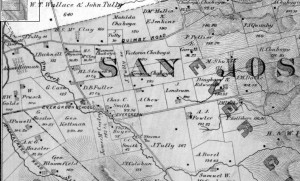 Alfred Chew would come to Evergreen and begin farming in 1860 3 miles outside of Evergreen. Alfred Chew would take his year’s profits and purchase a portion of attorney William Matthew’s property near downtown Evergreen in 1861, which was granted to him in exchange for legal services from the Chaboya vs. Squatters battle in years prior. This 1896 map shows no road where Chew Lane and now Aborn Road exists. Evergreen literally grew up with and around the Chew Family homestead. This is a black and white close up of the 1876 Thompson and West Altas with Chew’s property under “SAN”, before the road in his name was created. He would’ve moved in right next door to Charles Smith and Genrio Chaboya as one of the first residents of Evergreen.
Alfred Chew would come to Evergreen and begin farming in 1860 3 miles outside of Evergreen. Alfred Chew would take his year’s profits and purchase a portion of attorney William Matthew’s property near downtown Evergreen in 1861, which was granted to him in exchange for legal services from the Chaboya vs. Squatters battle in years prior. This 1896 map shows no road where Chew Lane and now Aborn Road exists. Evergreen literally grew up with and around the Chew Family homestead. This is a black and white close up of the 1876 Thompson and West Altas with Chew’s property under “SAN”, before the road in his name was created. He would’ve moved in right next door to Charles Smith and Genrio Chaboya as one of the first residents of Evergreen.
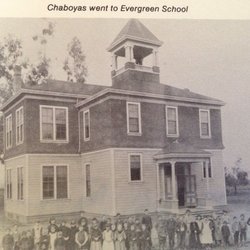 After his winfall year farming 200 acres 3 miles outside of Evergreen in 1859, Chew would buy 100 acres of his own and build his home in downtown Evergreen. He would raise 7 children with wife Margaret, Mamie. They would’ve gone to the Evergreen Schoolhouse. Mr. Alfred Chew would return to civil service, elected to the Board of County Supervisors in 1873. He would serve on the Board from 1874-1878. Chew would also serve in Santa Clara County’s Assessor’s Office into the early 1900’s. Both his wife, Mamie, and his daughter, Emily Ann or Emma, would teach at the Evergreen Schoolhouse down the street from his downtown Evergreen house. Emma would also marry into the well-known, well liked Hostetter Family, who found their way to Santa Clara County with the Evergreen Farnsworth family guardians. Over the 50 years Alfred lived in Evergreen, Chew’s neighbors would sell their large downtown Evergreen farms away to make room for subdivision housing. Evergreen would continue to grow in population. Chew’s farm had a very different fate.
After his winfall year farming 200 acres 3 miles outside of Evergreen in 1859, Chew would buy 100 acres of his own and build his home in downtown Evergreen. He would raise 7 children with wife Margaret, Mamie. They would’ve gone to the Evergreen Schoolhouse. Mr. Alfred Chew would return to civil service, elected to the Board of County Supervisors in 1873. He would serve on the Board from 1874-1878. Chew would also serve in Santa Clara County’s Assessor’s Office into the early 1900’s. Both his wife, Mamie, and his daughter, Emily Ann or Emma, would teach at the Evergreen Schoolhouse down the street from his downtown Evergreen house. Emma would also marry into the well-known, well liked Hostetter Family, who found their way to Santa Clara County with the Evergreen Farnsworth family guardians. Over the 50 years Alfred lived in Evergreen, Chew’s neighbors would sell their large downtown Evergreen farms away to make room for subdivision housing. Evergreen would continue to grow in population. Chew’s farm had a very different fate.
Mr. Alfred Chew’s Obituary would read “PROMINENT SAN JOSE ORCHARDIST IS DEAD Alfred Chew,” County Treasury Watchdog Passes Away SAN JOSE, Calif. Jan. 2. — Alfred Chew, for 33 years the “watchdog of the county treasury” and one of the most prominent orchardists of the county, died late last evening; at his home near Evergreen at the age of 75 years. For nearly half a century he had served the community as supervisor and deputy assessor or deputy tax collector. He is survived by seven children… ”
 The Chew children would continue to live in and work on the Evergreen farm on Chew Lane. Chew’s reputation and leadership in the early days of Evergreen was the reason its main artery was name after him over a hundred years ago. You can see it crossing the “A” in this 1902 map along the Hart Line.
The Chew children would continue to live in and work on the Evergreen farm on Chew Lane. Chew’s reputation and leadership in the early days of Evergreen was the reason its main artery was name after him over a hundred years ago. You can see it crossing the “A” in this 1902 map along the Hart Line.
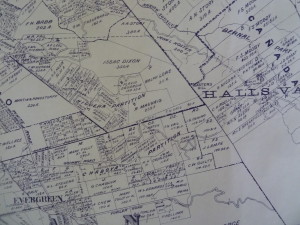 As you can see from the 1911 map to the left, this was the time Evergreen Road and Chew Lane became one Aborn Road. John Aborn, another revered Evergreen character, was a local pioneer figure from before Alfred Chew’s time in Evergreen who fought for farmers with the Chaboya Family, making the town of Evergreen possible. I wonder how his family must’ve felt about the renaming. Regardless of how Alfred Chew would’ve felt about the change of the street’s name, he would never have witnessed the change of address. The Chew Estate would stay in the family for a short while longer, all married and established, and the Chew family would move out of Evergreen in the 1910’s with Mamie’s passing.
As you can see from the 1911 map to the left, this was the time Evergreen Road and Chew Lane became one Aborn Road. John Aborn, another revered Evergreen character, was a local pioneer figure from before Alfred Chew’s time in Evergreen who fought for farmers with the Chaboya Family, making the town of Evergreen possible. I wonder how his family must’ve felt about the renaming. Regardless of how Alfred Chew would’ve felt about the change of the street’s name, he would never have witnessed the change of address. The Chew Estate would stay in the family for a short while longer, all married and established, and the Chew family would move out of Evergreen in the 1910’s with Mamie’s passing.

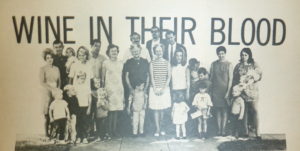 Shortly after the Chews’ death and Aborn Road’s creation, the original 100 acres purchased from William Matthews in 1861 would be sold to another famed Evergreen family, the Mirassous. Henriette Pellier would marry Mr. Mirassou, see her family carry on the tradition of winemaking and move the winery operations from Pellier Ranch off Quimby and Chaboya Road in 1911 to the Chew property off of Chew Lane. There, the Mirassou family would have its famed vineyards and historic tasting room on Aborn Road for almost 100 years.
Shortly after the Chews’ death and Aborn Road’s creation, the original 100 acres purchased from William Matthews in 1861 would be sold to another famed Evergreen family, the Mirassous. Henriette Pellier would marry Mr. Mirassou, see her family carry on the tradition of winemaking and move the winery operations from Pellier Ranch off Quimby and Chaboya Road in 1911 to the Chew property off of Chew Lane. There, the Mirassou family would have its famed vineyards and historic tasting room on Aborn Road for almost 100 years.
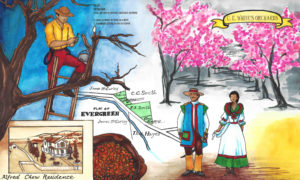 Through this artwork we’re trying to explain the transition from Native wilderness, to Mexican cow pastures to American homesteads. The artwork that features Mr. Alfred Chew’s residence from 1876, though certainly built in the 1860’s, is a piece that tries to do just that. Farmers moving into Evergreen would breathe new life into the ever green hills. Leaders like Chew would shape a developing area and Evergreen’s identity to the rest of the Country. It’s important to know who Chew was in Evergreen’s narrative.
Through this artwork we’re trying to explain the transition from Native wilderness, to Mexican cow pastures to American homesteads. The artwork that features Mr. Alfred Chew’s residence from 1876, though certainly built in the 1860’s, is a piece that tries to do just that. Farmers moving into Evergreen would breathe new life into the ever green hills. Leaders like Chew would shape a developing area and Evergreen’s identity to the rest of the Country. It’s important to know who Chew was in Evergreen’s narrative.
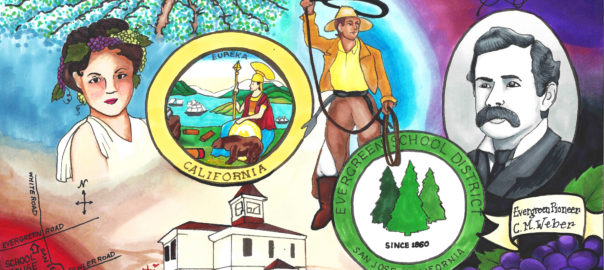
 The Evergreen Schoolhouse opened in 1860. There were enough Chaboyas, both European and American homesteaders and rancheros families to open up a school in Rancho Yerba Buena. It would be incorporated into the Santa Clara County Education system in 1866 as the township became more established.
The Evergreen Schoolhouse opened in 1860. There were enough Chaboyas, both European and American homesteaders and rancheros families to open up a school in Rancho Yerba Buena. It would be incorporated into the Santa Clara County Education system in 1866 as the township became more established.
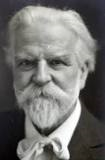 Famed author Edwin Markham (1852-1940) would come to Evergreen Schoolhouse to teach in its early days after attending San Jose State University. Teaching in Evergreen from 1969-89, he would recall the days of a single story school house, replaced by a larger two-story one. A nearby redwood tree was planted in his honor after teaching there for twenty years, which I intend to find if it’s still around. The Redwood would be over 100 years old now. It is said the Evergreen helps inspire some of Markham’s work. The commemorative redwood tree also might be the inspiration of the Evergreen trees in the School District’s logo.
Famed author Edwin Markham (1852-1940) would come to Evergreen Schoolhouse to teach in its early days after attending San Jose State University. Teaching in Evergreen from 1969-89, he would recall the days of a single story school house, replaced by a larger two-story one. A nearby redwood tree was planted in his honor after teaching there for twenty years, which I intend to find if it’s still around. The Redwood would be over 100 years old now. It is said the Evergreen helps inspire some of Markham’s work. The commemorative redwood tree also might be the inspiration of the Evergreen trees in the School District’s logo.
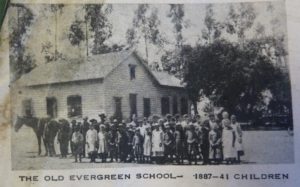 In general, the School’s schedule would sync up with the fruit picking seasons and operate 10 months a year. They insisted on keeping the school free to the public and secular from its inception. My old time interviewees would recall the school house at the corner or San Felipe/White Road and Aborn Road, then Evergreen Road. That may seem odd now, but it would’ve been located there the shopping center and Valero gas station stands today. The land was donated by Mr. Nirum Cadwallader, who also donated the same amount of land to the WCR some years later, and upheld the donation by William Matthews in the transaction to Geo. Kettmann. Education has been something Evergreen residents have felt strongly about since the town began. The Schoolhouse had been there on Evergreen Road, now Aborn, since the 1860. I think it’s so cool that today’s well-known creek crossings would’ve been somebody else’s path to school 150 years ago.
In general, the School’s schedule would sync up with the fruit picking seasons and operate 10 months a year. They insisted on keeping the school free to the public and secular from its inception. My old time interviewees would recall the school house at the corner or San Felipe/White Road and Aborn Road, then Evergreen Road. That may seem odd now, but it would’ve been located there the shopping center and Valero gas station stands today. The land was donated by Mr. Nirum Cadwallader, who also donated the same amount of land to the WCR some years later, and upheld the donation by William Matthews in the transaction to Geo. Kettmann. Education has been something Evergreen residents have felt strongly about since the town began. The Schoolhouse had been there on Evergreen Road, now Aborn, since the 1860. I think it’s so cool that today’s well-known creek crossings would’ve been somebody else’s path to school 150 years ago.
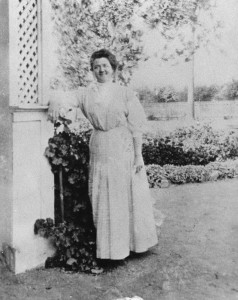
 Katherine R. Smith (1870-1973), daughter of town leader and postmaster Francis J. Smith, would come back to Evergreen schoolhouse after being one of the first women to graduate from San Jose State University and teach down the street from her house. The school house would remain there for a long time. Katie is huge part of Evergreen History.
Katherine R. Smith (1870-1973), daughter of town leader and postmaster Francis J. Smith, would come back to Evergreen schoolhouse after being one of the first women to graduate from San Jose State University and teach down the street from her house. The school house would remain there for a long time. Katie is huge part of Evergreen History.
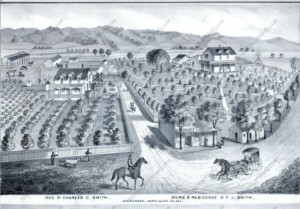 The two-story school house would be moved by rolling it over logs down the street on San Felipe Road and Yerba Buena Ave. during the 1950’s. This is when San Felipe would’ve changed directions and Keaton Loop created. Post World War and new City Planning developing in effect, Evergreen’s update began with this major move. It also helps explain why this view of the Smith homes feels incorrect. From the drawing, the road now runs between the houses and business, and this driveway between them is essentially Yerba Buena Avenue. Directly next to this road would’ve been Dry Creek, now known as Thompson Creek. The Schoolhouse would come to stand where the General Store and Winery are.
The two-story school house would be moved by rolling it over logs down the street on San Felipe Road and Yerba Buena Ave. during the 1950’s. This is when San Felipe would’ve changed directions and Keaton Loop created. Post World War and new City Planning developing in effect, Evergreen’s update began with this major move. It also helps explain why this view of the Smith homes feels incorrect. From the drawing, the road now runs between the houses and business, and this driveway between them is essentially Yerba Buena Avenue. Directly next to this road would’ve been Dry Creek, now known as Thompson Creek. The Schoolhouse would come to stand where the General Store and Winery are.
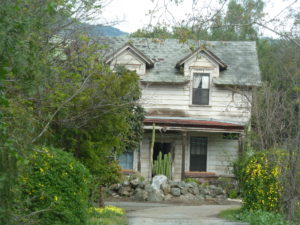 That’s right, the schoolhouse moved across the street from Katherine’s House. How rad is that? Katherine, Katie, would become Superintendent of the Evergreen Elementary School District, watch the school outgrow this two-story facility and move to Fowler Road before expanding with new schools. The Evergreen School is where Evergreen Elementary School is today. Katie would live to be 103 years old and known as the Daughter of Evergreen. As a staple of the Evergreen Community and a beloved educator, it only seems appropriate to name Evergreen’s second school in her honor in 1962.
That’s right, the schoolhouse moved across the street from Katherine’s House. How rad is that? Katherine, Katie, would become Superintendent of the Evergreen Elementary School District, watch the school outgrow this two-story facility and move to Fowler Road before expanding with new schools. The Evergreen School is where Evergreen Elementary School is today. Katie would live to be 103 years old and known as the Daughter of Evergreen. As a staple of the Evergreen Community and a beloved educator, it only seems appropriate to name Evergreen’s second school in her honor in 1962.
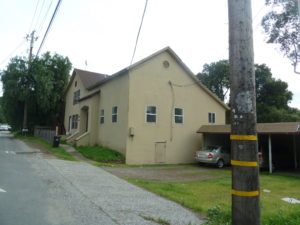 This two-story school house still stands today, or at least that’s what I had heard from fellow Evergreenians. I did some digging. I found what stands where the schoolhouse was last seen. There is this odd, adobe looking, older apartment building, called the Chaboya Apartments, standing there now at the intersection of San Felipe Road and Yerba Buena Avenue.
This two-story school house still stands today, or at least that’s what I had heard from fellow Evergreenians. I did some digging. I found what stands where the schoolhouse was last seen. There is this odd, adobe looking, older apartment building, called the Chaboya Apartments, standing there now at the intersection of San Felipe Road and Yerba Buena Avenue.
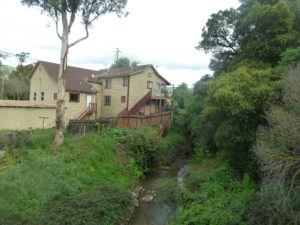 What I was not understanding or seeing before was that the Evergreen Schoolhouse does still stand, but with the addition to the original building disguising it. I took a closer look at what was there and found the Schoolhouse I was looking for hidden in plain sight! I find it here farthest to the right in the picture to the right. It would be naturally to extend evenly in each direction, but you’re pretty limited in repurposing a building with a creek in your backyard. To say it’s gotten some body work would be an understatement, but that’s it with the stairs leading up to it. Only the front got the more modern adobe facelift.
What I was not understanding or seeing before was that the Evergreen Schoolhouse does still stand, but with the addition to the original building disguising it. I took a closer look at what was there and found the Schoolhouse I was looking for hidden in plain sight! I find it here farthest to the right in the picture to the right. It would be naturally to extend evenly in each direction, but you’re pretty limited in repurposing a building with a creek in your backyard. To say it’s gotten some body work would be an understatement, but that’s it with the stairs leading up to it. Only the front got the more modern adobe facelift.
It’s an incredible finding as the Evergreen Elementary School District is an ally of The Evergreen Mural Walk project, as well as a source of its inspiration. Education is something we’d like to focus on here in Evergreen and that strength came from within in many instances. Katie is one of those inner strengths. The students still living having used this facility are still a connected family here in Evergreen. Here’s some of the artwork inspired by the early days of the Evergreen Elementary School District.
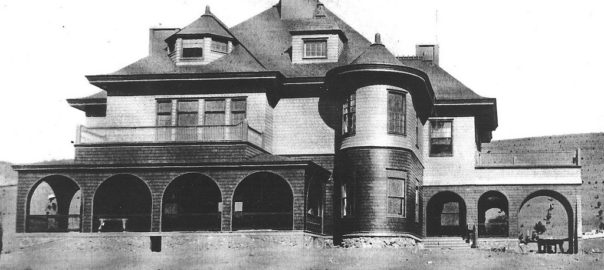
Sadly, 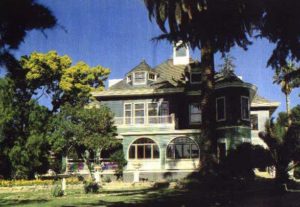 there are only a few original structures left from Evergreen’s early days. There aren’t Victorian homes standing like there are downtown. The old timers know the old town by the hundreds year old oak trees that marked their old homes. These relics from the 1800’s are obscured by trees and fences for the most part. This one is tucked back into the hills of the Villages Retirement Community, empty and unused. The absence of warmth to this one time brimming mansion is one of the sadder things I witness in Evergreen. Personally, I would love to it restored in time for my own wedding. This is the Wehner Mansion, but over time, it’s had many names.
there are only a few original structures left from Evergreen’s early days. There aren’t Victorian homes standing like there are downtown. The old timers know the old town by the hundreds year old oak trees that marked their old homes. These relics from the 1800’s are obscured by trees and fences for the most part. This one is tucked back into the hills of the Villages Retirement Community, empty and unused. The absence of warmth to this one time brimming mansion is one of the sadder things I witness in Evergreen. Personally, I would love to it restored in time for my own wedding. This is the Wehner Mansion, but over time, it’s had many names.
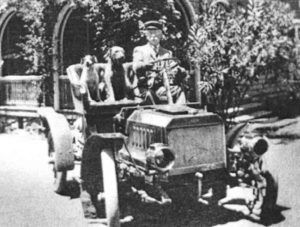 The initial 718 acre property would be purchased in 1887 for $20,000 from Mr. McCarthy and construction would begin the following year. Built by German immigrant, William Wehner, it was originally named the Villa Lomas Azules or Blue Hills Estate for its stunning color. It is only fitting that Wehner’s house be colorful. William Wehner (1853-1916), after coming to the United States from Hanover, Germany in the 1850’s, would be a famous Chicago painter, painting large scale panoramic paintings commemorating the Civil War. His Evergreen home would became a winery as Wehner planted 175 acres of vineyards within a couple years. William Wehner’s White Wines were award winning in 1888 and into the 1890’s. Wehner would come to own and plant over 3000 acres of vineyards.
The initial 718 acre property would be purchased in 1887 for $20,000 from Mr. McCarthy and construction would begin the following year. Built by German immigrant, William Wehner, it was originally named the Villa Lomas Azules or Blue Hills Estate for its stunning color. It is only fitting that Wehner’s house be colorful. William Wehner (1853-1916), after coming to the United States from Hanover, Germany in the 1850’s, would be a famous Chicago painter, painting large scale panoramic paintings commemorating the Civil War. His Evergreen home would became a winery as Wehner planted 175 acres of vineyards within a couple years. William Wehner’s White Wines were award winning in 1888 and into the 1890’s. Wehner would come to own and plant over 3000 acres of vineyards.
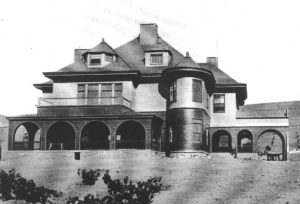 The Blue Estate or Villa Lomas Azules was a 3-story, Queen Anne style home built into the hillside. The construction on the mansion was finally complete in 1891. It was built by famous Chicago skyscraper builders from the firm of Burham and Root, designed by Richard Burham. It would be the only home the firm ever designed. The Mansion’s main architectural feature was its archway entrance for carriages along the bottom floor, but I love all the rounded features. The Mansion also has a full basement, which later became wine storage. The Blue Estate had an outdoor kitchen and a garden house, as well as a winery added in 1908.
The Blue Estate or Villa Lomas Azules was a 3-story, Queen Anne style home built into the hillside. The construction on the mansion was finally complete in 1891. It was built by famous Chicago skyscraper builders from the firm of Burham and Root, designed by Richard Burham. It would be the only home the firm ever designed. The Mansion’s main architectural feature was its archway entrance for carriages along the bottom floor, but I love all the rounded features. The Mansion also has a full basement, which later became wine storage. The Blue Estate had an outdoor kitchen and a garden house, as well as a winery added in 1908.
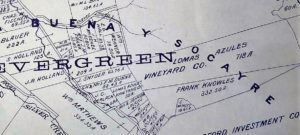 In 1915, Wehner would sell the winery and vineyard portion of the estate to Albert Haentze. The two men had a lot in common. Haentze (1896-1947) was another German immigrant vintner from Chicago. His main occupation before coming to California was a mortgage broker. Haentze came to Evergreen and bought Wehner’s vineyard. Mr. Albert Haentze would become the leader of the Santa Clara Valley Grape Growers Association until Prohibition. Haentze renamed the winery Rancho Villa Vista. William Wehner sold his vineyards in the knick of time. Prohibition closed down the Evergreen wineries in 1918 and Wehner passed away only a year later. The Santa Clara Valley Grape Growers would then consider canning grapes and crushing grapes for juices and syrup.
In 1915, Wehner would sell the winery and vineyard portion of the estate to Albert Haentze. The two men had a lot in common. Haentze (1896-1947) was another German immigrant vintner from Chicago. His main occupation before coming to California was a mortgage broker. Haentze came to Evergreen and bought Wehner’s vineyard. Mr. Albert Haentze would become the leader of the Santa Clara Valley Grape Growers Association until Prohibition. Haentze renamed the winery Rancho Villa Vista. William Wehner sold his vineyards in the knick of time. Prohibition closed down the Evergreen wineries in 1918 and Wehner passed away only a year later. The Santa Clara Valley Grape Growers would then consider canning grapes and crushing grapes for juices and syrup.
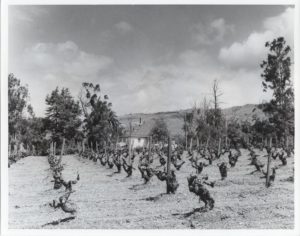 In 1933, Italian born, Benjamino Cribari (1859-1942) would purchase the first portion of the Villa Lomas Azules. With Prohibition having been lifted, the Italian immigrant would raise his vineyards for altar and traditional table wines. In 1940, the Cribari family would come to own the rest of the property. It would then be known as the Cribari Mansion.
In 1933, Italian born, Benjamino Cribari (1859-1942) would purchase the first portion of the Villa Lomas Azules. With Prohibition having been lifted, the Italian immigrant would raise his vineyards for altar and traditional table wines. In 1940, the Cribari family would come to own the rest of the property. It would then be known as the Cribari Mansion.
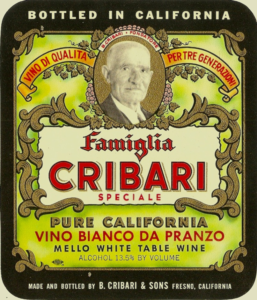 Benjamino Cribari, born in the Calabria, Italy, would come to the United States at the age of 29. With his wife and two small kids in Italy, Benjamino would work on the railroad for a couple years before returning home to his family. In 1902, the young Cribari family would relocate to Colorado and then California, where they bought 40 acres of land east of Morgan Hill. At first, Benjamino, a farmer, would only sell wines to his friends and family before he needed to acquire more land to compete with his growing demand for Italian style wines.
Benjamino Cribari, born in the Calabria, Italy, would come to the United States at the age of 29. With his wife and two small kids in Italy, Benjamino would work on the railroad for a couple years before returning home to his family. In 1902, the young Cribari family would relocate to Colorado and then California, where they bought 40 acres of land east of Morgan Hill. At first, Benjamino, a farmer, would only sell wines to his friends and family before he needed to acquire more land to compete with his growing demand for Italian style wines.
The Cribari Wineries would move operations back to Morgan Hill in 1959. The Blue Estate’s future became unclear.
 In the meantime, the Mirassou Family vintners would come to lease the property. They would rent the independent winery for winemaking and the full basement for storage. The oldest winemaking family in America would use the historic facilities until its historic operations also had to relocate in the 1980’s.
In the meantime, the Mirassou Family vintners would come to lease the property. They would rent the independent winery for winemaking and the full basement for storage. The oldest winemaking family in America would use the historic facilities until its historic operations also had to relocate in the 1980’s.
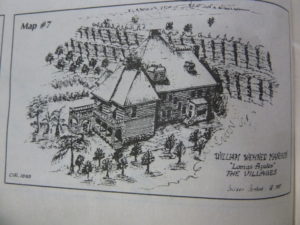 The Evergreen wineries were being pushed out by development and a growing suburb. Several developers purchased the property before the Villages were finally built around it. The Historic value of the Victorian mansion is recognized by the condition of the home is quite questionable. There’s much discussion about preserving the historic home, but the fruits of those discussions are yet to ripen. It’s a beautiful piece of Evergreen’s history and someday, we’ll see the Blue Estate shine again.
The Evergreen wineries were being pushed out by development and a growing suburb. Several developers purchased the property before the Villages were finally built around it. The Historic value of the Victorian mansion is recognized by the condition of the home is quite questionable. There’s much discussion about preserving the historic home, but the fruits of those discussions are yet to ripen. It’s a beautiful piece of Evergreen’s history and someday, we’ll see the Blue Estate shine again.
Here’s our artwork which features the Wehner Mansion.
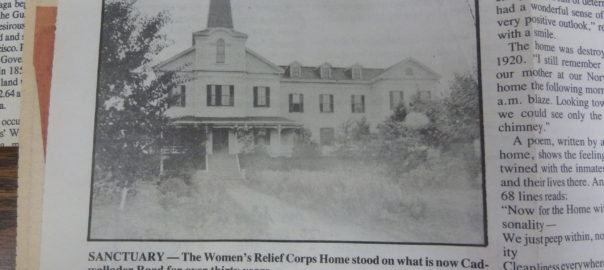
This this project, 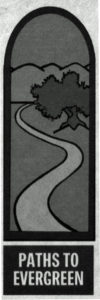 I have met some amazing, exemplary women from the Evergreen Community. In fact, they have been the silent hands that guide this artwork and this narrative. Colleen Cortese inspires this work with her series of articles “Evergreen Pathways” published by the Evergreen Times, her curation of the Heritage Room at Evergreen Valley College, her historical work with St. Francis Asis Catholic Church on San Felipe Road and with her own kindness and time. Jennifer DiNapoli helped me find contemporary exemplary Evergreen individuals. Winnifred Coe Verbica is an awesome lady who had one foot in the city and one in the countryside. DeEtte Richmond Sipos is helping us look into Women in the workforce and one of the first Childcare services in regards to her great Grandfather’s business. Evergreen Elementary School District’s Superintendent, Kathy Gomez, is one of this projects and this narrative’s strongest allies. Denise Belilse runs a well-known Evergreen business in Evergreen Village Square, the Evergreen Coffee Company. Our Vice Mayor and councilwoman, Rose Herrera, continues a legacy of women leading the way in Evergreen. Women have been making Evergreen amazing, whether these ladies let me sing their praises or not.
I have met some amazing, exemplary women from the Evergreen Community. In fact, they have been the silent hands that guide this artwork and this narrative. Colleen Cortese inspires this work with her series of articles “Evergreen Pathways” published by the Evergreen Times, her curation of the Heritage Room at Evergreen Valley College, her historical work with St. Francis Asis Catholic Church on San Felipe Road and with her own kindness and time. Jennifer DiNapoli helped me find contemporary exemplary Evergreen individuals. Winnifred Coe Verbica is an awesome lady who had one foot in the city and one in the countryside. DeEtte Richmond Sipos is helping us look into Women in the workforce and one of the first Childcare services in regards to her great Grandfather’s business. Evergreen Elementary School District’s Superintendent, Kathy Gomez, is one of this projects and this narrative’s strongest allies. Denise Belilse runs a well-known Evergreen business in Evergreen Village Square, the Evergreen Coffee Company. Our Vice Mayor and councilwoman, Rose Herrera, continues a legacy of women leading the way in Evergreen. Women have been making Evergreen amazing, whether these ladies let me sing their praises or not.
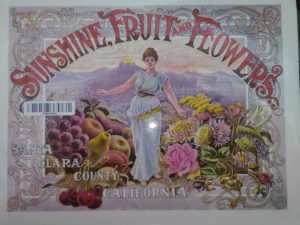 There is a Woman’s organization whose been apart of Evergreen’s identity through the years which is undeniably a symbol of Evergreen, though it has long been forgotten. The Women’s Relief Corps Home in Evergreen can be found in publications and books published on landmarks of the Santa Clara Valley as far back at the 1890’s. This historical home on Cadwallader Avenue, then downtown Evergreen, was burnt now so it is an easily overlooked piece of Evergreen’s narrative. That having been said, the WRC is where women really show their leadership in early Evergreen.
There is a Woman’s organization whose been apart of Evergreen’s identity through the years which is undeniably a symbol of Evergreen, though it has long been forgotten. The Women’s Relief Corps Home in Evergreen can be found in publications and books published on landmarks of the Santa Clara Valley as far back at the 1890’s. This historical home on Cadwallader Avenue, then downtown Evergreen, was burnt now so it is an easily overlooked piece of Evergreen’s narrative. That having been said, the WRC is where women really show their leadership in early Evergreen.
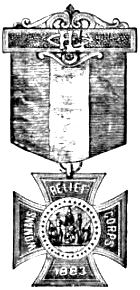 Mr. Nirum Hart Cadwallader donated the 5 acres land for the Evergreen schoolhouse on San Felipe Road and Evergreen Road as early as 1860. Cadwallader aslo donated over 5 acres of land for the Women’s Relief Corps, which was funded by the Grand Army of the Republic following the Civil War. The GAR was made up of Civil War Veterans of the Army and Naval forces beginning in 1866. Women’s Relief Corps, recognized in 1883, were established across the United States of America to house veterans, widows and orphans of the Civil War. As time passed, they became hospitals for the chronically ill.
Mr. Nirum Hart Cadwallader donated the 5 acres land for the Evergreen schoolhouse on San Felipe Road and Evergreen Road as early as 1860. Cadwallader aslo donated over 5 acres of land for the Women’s Relief Corps, which was funded by the Grand Army of the Republic following the Civil War. The GAR was made up of Civil War Veterans of the Army and Naval forces beginning in 1866. Women’s Relief Corps, recognized in 1883, were established across the United States of America to house veterans, widows and orphans of the Civil War. As time passed, they became hospitals for the chronically ill.
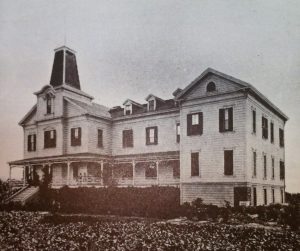 Evergreen’s Women’s Relief Corps Home was opened in 1889 off of Cadwallader Avenue near present day Thompson Creek and Keaton Loop. It was the only hospital of its kind in Santa Clara County. Though Mr. Nirum Cadwallader originally from Ohio continues to be a mystery, his contributions made to township of Evergreen, then a farming community, made it a more connected, hospitable, praiseworthy place. Mrs. Bayington was once of its earliest Matrons. Evergreen’s WRC would take on patients from around the country, seeking sanctuary from the devastation and injuries of the American Civil War.
Evergreen’s Women’s Relief Corps Home was opened in 1889 off of Cadwallader Avenue near present day Thompson Creek and Keaton Loop. It was the only hospital of its kind in Santa Clara County. Though Mr. Nirum Cadwallader originally from Ohio continues to be a mystery, his contributions made to township of Evergreen, then a farming community, made it a more connected, hospitable, praiseworthy place. Mrs. Bayington was once of its earliest Matrons. Evergreen’s WRC would take on patients from around the country, seeking sanctuary from the devastation and injuries of the American Civil War.
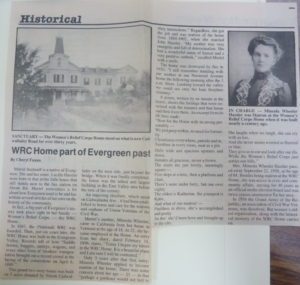 Another place where the Women’s Relief Corps Home reoccurred in my research was looking into well-known Evergreen families.
Another place where the Women’s Relief Corps Home reoccurred in my research was looking into well-known Evergreen families.
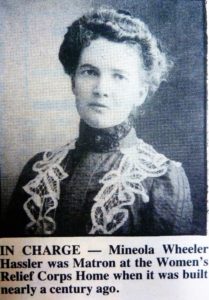 Mineola Wheeler Hassler (1874-1958), pictured here to the left was the Home’s manager in 1899. Miss Mineola Wheeler married German immigrant and Evergreen land owner John Hassler in 1902 at her parents home. The Hasslers, after buying up land from Rancho Yerba Buena with the Kettmanns following land disputes, would come to own the ranch which is now known as “The Ranch Country Club” and Hassler Parkway area. The Hassler family’s bright red barn was very notable and even a point of tourism in the 1920’s.
Mineola Wheeler Hassler (1874-1958), pictured here to the left was the Home’s manager in 1899. Miss Mineola Wheeler married German immigrant and Evergreen land owner John Hassler in 1902 at her parents home. The Hasslers, after buying up land from Rancho Yerba Buena with the Kettmanns following land disputes, would come to own the ranch which is now known as “The Ranch Country Club” and Hassler Parkway area. The Hassler family’s bright red barn was very notable and even a point of tourism in the 1920’s.
Mineola would be employed with the Evergreen Home in 1896 and then become Matron of the Women’s Relief Corps in 1899 until 1902 when she married Mr. Hassler. She would raise her family where the now vacant fire station stands on Aborn Road.
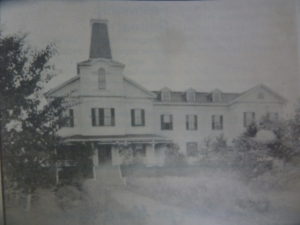 The Women’s Relief Corps home would burn down in 1920 flames being seen as far as Norwood Avenue. It’s suspected that an ill patient lit the fire that seized the home. With California’s famed Golden Girl, Mrs. Geraldine Frisbie, the Evergreen patients were then transferred to Osborne Hall in 1921 in the township of Santa Clara. Santa Clara’s Osborne Hall, established by Dr. and Mrs. E. A. Osborne, would later develop into Angew Hospital. It would be one of the first hospitals for the feeble-minded, as Dr. Osborne pioneered the field from the 1870’s forward. With the GAR dissolving in the 1950’s, as Civl War veterans, widows and orphans were passing away, it repurposed the valuable sanctuary/hospital hall.
The Women’s Relief Corps home would burn down in 1920 flames being seen as far as Norwood Avenue. It’s suspected that an ill patient lit the fire that seized the home. With California’s famed Golden Girl, Mrs. Geraldine Frisbie, the Evergreen patients were then transferred to Osborne Hall in 1921 in the township of Santa Clara. Santa Clara’s Osborne Hall, established by Dr. and Mrs. E. A. Osborne, would later develop into Angew Hospital. It would be one of the first hospitals for the feeble-minded, as Dr. Osborne pioneered the field from the 1870’s forward. With the GAR dissolving in the 1950’s, as Civl War veterans, widows and orphans were passing away, it repurposed the valuable sanctuary/hospital hall.
The artwork, in kind, for this piece of Women’s History in Evergreen, has done some developing as the leads get followed and the story becomes clearer. Here are the pieces we’ve worked up for the WRC with the last being the latest.
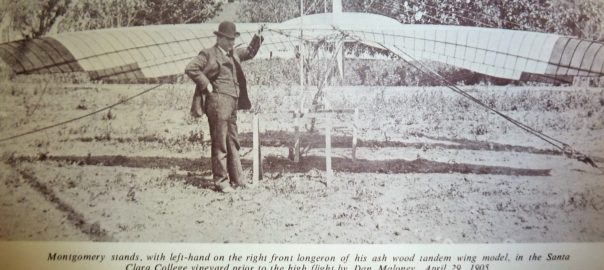
The town of 
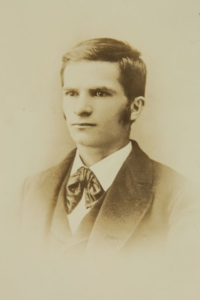 Evergreen, still not apart of San Jose, was known for many things at the turn of the 20th century. One of the things, besides its plentiful fruit and famed wines, that put the Village of Evergreen and City of San Jose on the national map was the invention of modern flight. The inventor, engineer, and dare-devil John J. Montgomery would flight Man’s first controlled flight in 1883 and take flights from the Evergreen hillsides and in downtown San Jose in the early 1900’s. Montgomery and fellow aviator, Daniel Maloney, would give their lives for their passion and invention of flight.
Evergreen, still not apart of San Jose, was known for many things at the turn of the 20th century. One of the things, besides its plentiful fruit and famed wines, that put the Village of Evergreen and City of San Jose on the national map was the invention of modern flight. The inventor, engineer, and dare-devil John J. Montgomery would flight Man’s first controlled flight in 1883 and take flights from the Evergreen hillsides and in downtown San Jose in the early 1900’s. Montgomery and fellow aviator, Daniel Maloney, would give their lives for their passion and invention of flight.
John J. Montgomery, the son of a prominent lawyer brought out West by the Gold Rush, was born in 1858 in Yuba City/Marysville. As a boy, John Montgomery would observe flight through birds in the sky and use that as inspiration throughout his work. Montgomery would also be inspired by another early aviator’s demonstration during his boyhood. The Montgomery family would move into Oakland in 1864, where his father held a successful law practice. In Millbrae in 1869, a young John Montgomery would witness the flight of an airship, closer to a zeppelin or blimp, called the Avitor Hermes, Jr. Young Montgomery would go home to Oakland and build a model for himself. Only a hand full of people had ever been in flight. Back then, ships would be lifted by balloons of helium or hydrogen, and were only in air for a very limited amount of flight time, a matter of seconds, before descent.
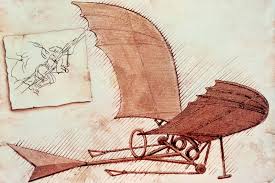
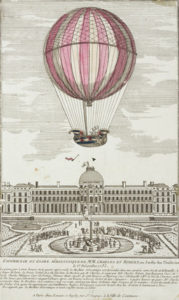 People have been fascinated with flight but baffled by its execution. In a Greek Myth, Icarus would try to fly with wings of feathers and wax that melted as he approached the Sun. This creates the message that flight is beyond our grasp. There were totally kites going back in history. Leonardo Da Vinci would dream of inventing planes and helicopters in the 15th-16th century. Hot air balloons and the like would be used in the later half of the 18th century. Before John Montgomery’s time, balloons would be the only way to make flight possible, pioneered by Jacques Charles and the Robert brothers. The obstacle with preceding inventions for flight would fall short because they were too heavy to launch from the ground. The planes would simply fall.
People have been fascinated with flight but baffled by its execution. In a Greek Myth, Icarus would try to fly with wings of feathers and wax that melted as he approached the Sun. This creates the message that flight is beyond our grasp. There were totally kites going back in history. Leonardo Da Vinci would dream of inventing planes and helicopters in the 15th-16th century. Hot air balloons and the like would be used in the later half of the 18th century. Before John Montgomery’s time, balloons would be the only way to make flight possible, pioneered by Jacques Charles and the Robert brothers. The obstacle with preceding inventions for flight would fall short because they were too heavy to launch from the ground. The planes would simply fall.
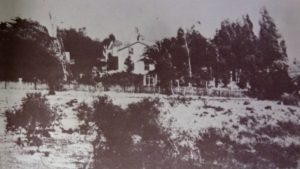 John Montgomery attended St. Ignatius College in San Francisco, graduating in 1879 and obtaining his Masters in 1880. James Lick Observatory would begin construction in 1879 and John would’ve become aware of Santa Clara County’s elevations. Montgomery would start designing his flying machines in San Diego County in 1881 when his family moved there after college. After his hours working on the farm, he would pour the left over energy into his theories. John Montgomery would build models in the barn’s attic. These first designs, Montgomery would work with a flapping wing like Leonardo Da Vinci’s sketch. The flapping wing wouldn’t be as effective as a fixed one.
John Montgomery attended St. Ignatius College in San Francisco, graduating in 1879 and obtaining his Masters in 1880. James Lick Observatory would begin construction in 1879 and John would’ve become aware of Santa Clara County’s elevations. Montgomery would start designing his flying machines in San Diego County in 1881 when his family moved there after college. After his hours working on the farm, he would pour the left over energy into his theories. John Montgomery would build models in the barn’s attic. These first designs, Montgomery would work with a flapping wing like Leonardo Da Vinci’s sketch. The flapping wing wouldn’t be as effective as a fixed one.
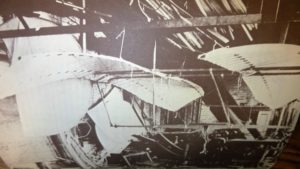 In 1882-84, Montgomery would experiment with flight outside of San Diego along the Mexican border with “gliders”, a monoplane closer to a hang-glider than Leonardo’s flapping flying machine. Gliders would require perfect conditions to get and keep in flight or the aforementioned balloon would raise the machine hundreds of feet. This is a scene from Montgomery’s San Diego area workshop. This machine was inspired on the wings of seagulls. John J. Montgomery’s flights in the 1880’s would be the first heavier-than-air flight, the event observed by friends and family members but not widely publicized. This glider would’ve been a gull shaped, single winged flying machine, or a monoplane. The glider would ignore the “Yaw” or center of mass, the gravitational force towards that would swing from the heaviest point, the pilot. During this time, Octave Chanute, a contemporary critic, would have harsh words for Montgomery, but Montgomery’s pursuit of flight would continue.
In 1882-84, Montgomery would experiment with flight outside of San Diego along the Mexican border with “gliders”, a monoplane closer to a hang-glider than Leonardo’s flapping flying machine. Gliders would require perfect conditions to get and keep in flight or the aforementioned balloon would raise the machine hundreds of feet. This is a scene from Montgomery’s San Diego area workshop. This machine was inspired on the wings of seagulls. John J. Montgomery’s flights in the 1880’s would be the first heavier-than-air flight, the event observed by friends and family members but not widely publicized. This glider would’ve been a gull shaped, single winged flying machine, or a monoplane. The glider would ignore the “Yaw” or center of mass, the gravitational force towards that would swing from the heaviest point, the pilot. During this time, Octave Chanute, a contemporary critic, would have harsh words for Montgomery, but Montgomery’s pursuit of flight would continue.
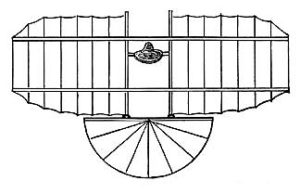 John J. Montgomery would continue experimenting and flying throughout California, in San Diego, San Francisco, Santa Cruz and Santa Clara Counties. To fund his inventions, John Montgomery would pursue other endeavors within physics and engineering. In 1884, Montgomery would be granted a patent for the process of vulcanizing and devulcanizing rubber.
John J. Montgomery would continue experimenting and flying throughout California, in San Diego, San Francisco, Santa Cruz and Santa Clara Counties. To fund his inventions, John Montgomery would pursue other endeavors within physics and engineering. In 1884, Montgomery would be granted a patent for the process of vulcanizing and devulcanizing rubber.
 In 1885, Montgomery would start also experimenting with how air flowed over different shaped surfaces, adding considerably to the field of aerodynamics. Montgomery, still in San Diego County, would be so secretive about his experiments, no one knew what he was up to at the time but close family members. The fruit of this labor would later be written in trade publications and heard during groundbreaking Aviation Navigation discussions in the early 20th century. Inspired by the articulating wings of turkey vultures and eagles, he would being to tie the fixed wing to a guiding mechanism to keep the plane even or balanced. Montgomery’s research would prove a slightly curved surface best for his gliders. Montgomery would also start programming direction and counter-controls for gusts of wind and easy turning through a series of spring loaded mechanisms.
In 1885, Montgomery would start also experimenting with how air flowed over different shaped surfaces, adding considerably to the field of aerodynamics. Montgomery, still in San Diego County, would be so secretive about his experiments, no one knew what he was up to at the time but close family members. The fruit of this labor would later be written in trade publications and heard during groundbreaking Aviation Navigation discussions in the early 20th century. Inspired by the articulating wings of turkey vultures and eagles, he would being to tie the fixed wing to a guiding mechanism to keep the plane even or balanced. Montgomery’s research would prove a slightly curved surface best for his gliders. Montgomery would also start programming direction and counter-controls for gusts of wind and easy turning through a series of spring loaded mechanisms.
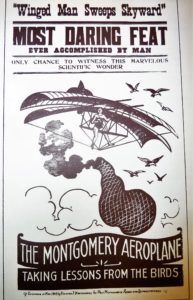 John J. Montgomery was finally hearing through the newspapers and his brother, in New York, about other early aviators. This news and competition would inspire Montgomery to act upon his research, and be a part of the conversation in the new field of science.
John J. Montgomery was finally hearing through the newspapers and his brother, in New York, about other early aviators. This news and competition would inspire Montgomery to act upon his research, and be a part of the conversation in the new field of science.
In 1893, Montgomery attended the Chicago Columbian Exhibition to listen to Nikola Tesla speak about electricity. Once there, John would introduce himself to the aviation and physics professors, inventors and theorists. His networking paid off, and Montgomery would be invited to speak at the conference himself and gain through his experiments. Montgomery, gaining fame for his accomplishments, would begin lecturing at colleges across the country, demonstrating flights and investigating the physics behind flight. The flow of air over the wing would affect the next design of flying machines.
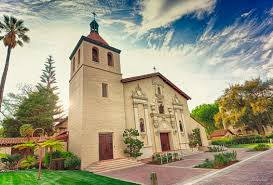 In 1895, John J. Montgomery would own a patent for a better petroleum burning furnace. John Montgomery would be invited to take a teaching position with Santa Clara University in 1897. He would teach physics and other sciences. At the University in 1901, Montgomery would begin experimenting with Father Richard Bell on wireless telecommunications or radio, transmitting messages as far as San Francisco. In later years, he would demonstrate flight for hundreds of spectators at Santa Clara.
In 1895, John J. Montgomery would own a patent for a better petroleum burning furnace. John Montgomery would be invited to take a teaching position with Santa Clara University in 1897. He would teach physics and other sciences. At the University in 1901, Montgomery would begin experimenting with Father Richard Bell on wireless telecommunications or radio, transmitting messages as far as San Francisco. In later years, he would demonstrate flight for hundreds of spectators at Santa Clara.
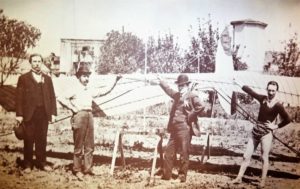 In 1903, John J. Montgomery would begin to develop this gliders again while teaching at Santa Clara University. He would also coin the word “aeroplane”, which later became “airplane”, and gain the patent in 1905 for the improvements of the technology. Inspired by the collaboration of a colleague, Montgomery would design a tandem winged glider with a propeller. The collaborator would take Montgomery’s propeller design and win first place at the World Fair in St. Louis, Missouri.
In 1903, John J. Montgomery would begin to develop this gliders again while teaching at Santa Clara University. He would also coin the word “aeroplane”, which later became “airplane”, and gain the patent in 1905 for the improvements of the technology. Inspired by the collaboration of a colleague, Montgomery would design a tandem winged glider with a propeller. The collaborator would take Montgomery’s propeller design and win first place at the World Fair in St. Louis, Missouri.
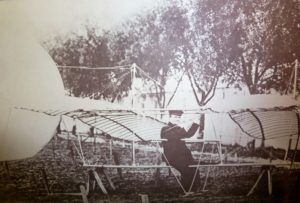 Sometimes, competition is the healthiest thing for invention and innovation. John J. Montgomery wouldn’t be discouraged by the professional betrayal. Montgomery would lead several successful high elevation flights launched from balloons and maintaining flight for several minutes until gliding to a gradual stop. The Wright Brothers would also be taking flight around this time. What separated Montgomery’s work from other early aviators, besides beating them to flight by 20 years, was the duration of flight and the controlled figure eight patterns demonstrated. Montgomery’s machines wouldn’t have a motor at this point, but that wasn’t Montgomery’s priority. Safety and control were paramount to him.
Sometimes, competition is the healthiest thing for invention and innovation. John J. Montgomery wouldn’t be discouraged by the professional betrayal. Montgomery would lead several successful high elevation flights launched from balloons and maintaining flight for several minutes until gliding to a gradual stop. The Wright Brothers would also be taking flight around this time. What separated Montgomery’s work from other early aviators, besides beating them to flight by 20 years, was the duration of flight and the controlled figure eight patterns demonstrated. Montgomery’s machines wouldn’t have a motor at this point, but that wasn’t Montgomery’s priority. Safety and control were paramount to him.
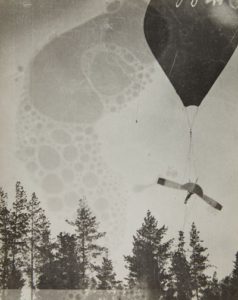 In July of 1905, Montgomery’s friend, colleague and test pilot, Daniel Maloney, would die testing on of his gliders on a balloon elevated flight. The Santa Clara, this version of the aeroplane, was flown hundreds times. The machine was damaged on a previous flight but hadn’t broken completely until that point. Maloney and Montgomery would’ve tested their gliders in the hills of Evergreen, as well as other places, before demonstrations in the City of San Jose and the University. This event and the big Earthquake of 1906 would cause Montgomery to take a little break from flying.
In July of 1905, Montgomery’s friend, colleague and test pilot, Daniel Maloney, would die testing on of his gliders on a balloon elevated flight. The Santa Clara, this version of the aeroplane, was flown hundreds times. The machine was damaged on a previous flight but hadn’t broken completely until that point. Maloney and Montgomery would’ve tested their gliders in the hills of Evergreen, as well as other places, before demonstrations in the City of San Jose and the University. This event and the big Earthquake of 1906 would cause Montgomery to take a little break from flying.
Montgomery would always be inventing and contributing to a wide range of industries. In 1909, perhaps inspired by hearing Nikola Tesla speak in 1893, John J. Montgomery would patent an alternating current rectifier. This would’ve improved radios and electrical vacuums at the time. The semi-conductor would replace this technology later on. Current Alternating Current Rectifiers are still used in DC (Direct Current) and high-voltage situations today. Most power sources around your house are grounded (GFC), not direct.
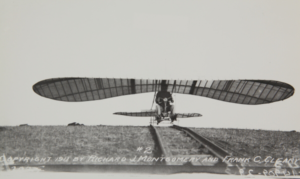 Despite popular belief, John J. Montgomery didn’t actually live in the Village of Evergreen. Montgomery lived closer to Santa Clara University where he worked and the Pueblo of San Jose that built up around the Mission of Santa Clara. John Montgomery would come to get permissions from Evergreen’s Ramonda Family to fly on their ranch with the optimal hillsides to take flight from without the assistance of a balloon.
Despite popular belief, John J. Montgomery didn’t actually live in the Village of Evergreen. Montgomery lived closer to Santa Clara University where he worked and the Pueblo of San Jose that built up around the Mission of Santa Clara. John Montgomery would come to get permissions from Evergreen’s Ramonda Family to fly on their ranch with the optimal hillsides to take flight from without the assistance of a balloon.
John Montgomery would fly again in 1910, after finding his love. Montgomery fixed, immobilized, the tail of the airplane and incorporated the guiding features into the warping of the wing pattern. From there, John J. Montgomery was to add an engine and patent the design as the first plane. This design was titled “the Evergreen”.
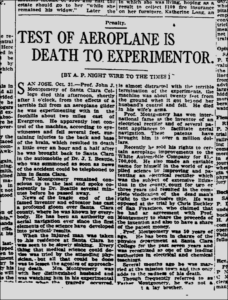 Unfortunately, during this series of flights and trials, John J. Montgomery would pass away after a landing he couldn’t walk away from. On October 31, 1911, Montgomery would fly through Evergreen for the last time. Without his contributions to the field and his competition that drove other inventors, we would be flying hundreds of miles an hour in metal tubes over a hundred years later. Beyond that, Montgomery was constantly improving upon technology and his work is around us everywhere, from our car tires to our electrical outlets.
Unfortunately, during this series of flights and trials, John J. Montgomery would pass away after a landing he couldn’t walk away from. On October 31, 1911, Montgomery would fly through Evergreen for the last time. Without his contributions to the field and his competition that drove other inventors, we would be flying hundreds of miles an hour in metal tubes over a hundred years later. Beyond that, Montgomery was constantly improving upon technology and his work is around us everywhere, from our car tires to our electrical outlets.
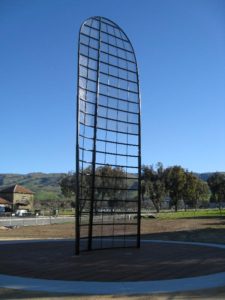 The experiments and public demonstrations in Santa Clara County brought another claim to fame for the Valley of Heart’s Delight. If you didn’t know Evergreen’s famous fruit or famous wines, you would’ve heard about that guy who died flying there. The park and monument are here in Evergreen at Montgomery Hill Park along Yerba Buena Road and San Felipe Road, near where he passed. Another monument stands today at the Santa Clara University campus. Another airplane wing stands at the site of his San Diego County flights. You can also view his work at the Smithsonian Museum in Washington D.C or the much closer Hiller Museum in Redwood City. His great grandnephew has written a book and has agreed to our interview on the subject of John J. Montgomery and flight in general, at he follows in John’s footsteps as a professor of physics at UC Santa Cruz.
The experiments and public demonstrations in Santa Clara County brought another claim to fame for the Valley of Heart’s Delight. If you didn’t know Evergreen’s famous fruit or famous wines, you would’ve heard about that guy who died flying there. The park and monument are here in Evergreen at Montgomery Hill Park along Yerba Buena Road and San Felipe Road, near where he passed. Another monument stands today at the Santa Clara University campus. Another airplane wing stands at the site of his San Diego County flights. You can also view his work at the Smithsonian Museum in Washington D.C or the much closer Hiller Museum in Redwood City. His great grandnephew has written a book and has agreed to our interview on the subject of John J. Montgomery and flight in general, at he follows in John’s footsteps as a professor of physics at UC Santa Cruz.
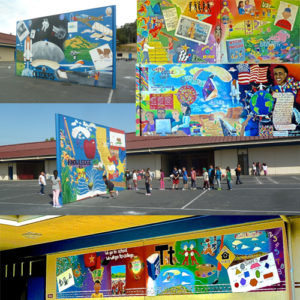 My experience and my knowledge of John J. Montgomery began with painting for the Evergreen School District at the school named in his honor. Otherwise, I would’ve remained unaware of the inventor. There, one of the ball walls specifically discusses the History of Aviation and where John J. Montgomery fits within that narrative. Gliders were incorporated into all the murals on campus.
My experience and my knowledge of John J. Montgomery began with painting for the Evergreen School District at the school named in his honor. Otherwise, I would’ve remained unaware of the inventor. There, one of the ball walls specifically discusses the History of Aviation and where John J. Montgomery fits within that narrative. Gliders were incorporated into all the murals on campus.
Other longtime Evergreen residents, like Jerry Kettmann, would’ve had an intimate relationship with aviation, cultivated at the nearby Hillview Airport. Harriet Quimby would’ve been directly inspired by Montgomery’s flights. Here’s the artwork we have planned for John J. Montgomery who helped put Evergreen on the map.
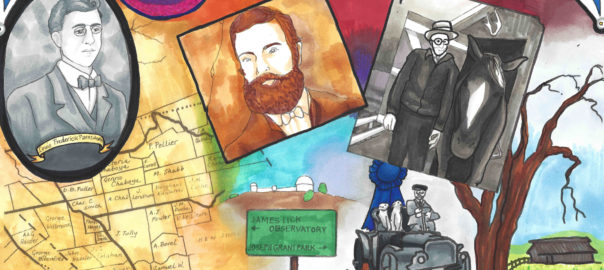
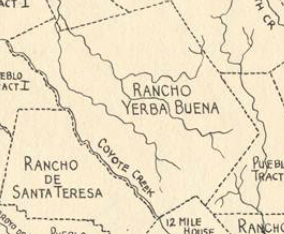 California would be fast tracked as a State and the Village of Evergreen would become a town where immigrants could find the American dream coming true. The same could be said of Willow Glen, Saratoga, Berryessa, Santa Clara, Alviso and other towns surrounding the Pueblo of San Jose during the 1850’s being turned into highly profitable orchards and vineyards. Many would find new homes in early Evergreen from back East, the Midwest and even Europe. This did, however, create stiff tensions between newcomers and the Mexican Rancho owners across Santa Clara Valley. These tensions would come to a head in Evergreen with a “Settlers’ War”, culminating in a fight over Squatters’ and Homesteaders’ Rights. Rancho Yerba Buena Socraye is the boundary of Evergreen, so its stories are our stories.
California would be fast tracked as a State and the Village of Evergreen would become a town where immigrants could find the American dream coming true. The same could be said of Willow Glen, Saratoga, Berryessa, Santa Clara, Alviso and other towns surrounding the Pueblo of San Jose during the 1850’s being turned into highly profitable orchards and vineyards. Many would find new homes in early Evergreen from back East, the Midwest and even Europe. This did, however, create stiff tensions between newcomers and the Mexican Rancho owners across Santa Clara Valley. These tensions would come to a head in Evergreen with a “Settlers’ War”, culminating in a fight over Squatters’ and Homesteaders’ Rights. Rancho Yerba Buena Socraye is the boundary of Evergreen, so its stories are our stories.
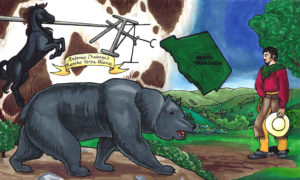 Marcos Chaboya and his family, as Californios, would come to the Santa Clara Valley in the 1820’s to settle the area with vast herds of cattle. I have varying sources as to whom sponsored Chaboya’s trip, the Spanish or the Mexican Governments. Antonio Chaboya would be granted over 24,000 acres of Rancho Yerba Buena in 1833 by the Governer of Alta California when California was a new Mexican territory. The boundaries of his rancho create the modern boundaries of the Evergreen Community. Antonio’s brothers would also be granted land nearby in Santa Clara County.
Marcos Chaboya and his family, as Californios, would come to the Santa Clara Valley in the 1820’s to settle the area with vast herds of cattle. I have varying sources as to whom sponsored Chaboya’s trip, the Spanish or the Mexican Governments. Antonio Chaboya would be granted over 24,000 acres of Rancho Yerba Buena in 1833 by the Governer of Alta California when California was a new Mexican territory. The boundaries of his rancho create the modern boundaries of the Evergreen Community. Antonio’s brothers would also be granted land nearby in Santa Clara County.
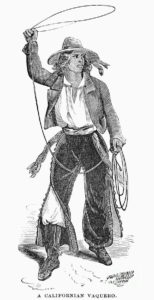 24,000 acres is really hard to survey and keep an eye on on horseback. The Chaboya family and their ranch hands wouldn’t be able to ward off all of the Ohlone Natives, American settlers and European newcomers who would make a home at Rancho Yerba Buena. Don Pedro Chaboya would lead the charge to run off returning indigenous people from the ranchos in the 1820’s. Antonio Chaboya’s brothers, owning ranchos nearby, would suffer a similar fate. California was recently accepted into the Union as a full fledged State, and these events were some of those growing pains.
24,000 acres is really hard to survey and keep an eye on on horseback. The Chaboya family and their ranch hands wouldn’t be able to ward off all of the Ohlone Natives, American settlers and European newcomers who would make a home at Rancho Yerba Buena. Don Pedro Chaboya would lead the charge to run off returning indigenous people from the ranchos in the 1820’s. Antonio Chaboya’s brothers, owning ranchos nearby, would suffer a similar fate. California was recently accepted into the Union as a full fledged State, and these events were some of those growing pains.
So, what’s the United States Government to do about a Mexican land grant it upheld in court in the new State of California and the American Dream it promised to new Californians?
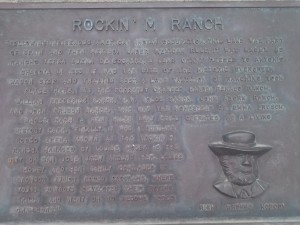 John Aborn would immigrate from England to California through San Francisco as early as 1833. Aborn, for which Aborn Road is named for, would be a veteran of the Mexican American War and the Civil War. He would also be named as a defendant by the Chaboya family for illegally homesteading on his property, or “squatting”. People liked this defendant so much, they named a road in Evergreen after him! He married a Donner Party survivor. The word on the street, rather the plaque, is that he held a popular rodeo back in the day off Neiman Boulevard and Capitol Expressway. How are you gonna deny this man his rights after fighting for your liberties?
John Aborn would immigrate from England to California through San Francisco as early as 1833. Aborn, for which Aborn Road is named for, would be a veteran of the Mexican American War and the Civil War. He would also be named as a defendant by the Chaboya family for illegally homesteading on his property, or “squatting”. People liked this defendant so much, they named a road in Evergreen after him! He married a Donner Party survivor. The word on the street, rather the plaque, is that he held a popular rodeo back in the day off Neiman Boulevard and Capitol Expressway. How are you gonna deny this man his rights after fighting for your liberties?

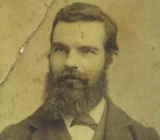 Let’s back up. What brought on the hostilities in Evergreen?Antonio Chaboya would first appear in court in front of Justice McKee to evict farmer John Tully, an Irish immigrant, from Rancho Yerba Buena in 1856. This decision was a compromise. Chaboya would have to sell his land for a fair price. John Tully wouldn’t be evicted and paid $900.00 for the fine in 1858. In 1861, John Tully would come up with $4,400.00 for the real estate having gone through proper channels. After this point, Homestead Laws would dictate that a farmer would need to live and work on the property for 5 years and that only 160 acres could be obtain through this avenue. Judging by this map in 1866, this was probably the John Tully property being fought over.
Let’s back up. What brought on the hostilities in Evergreen?Antonio Chaboya would first appear in court in front of Justice McKee to evict farmer John Tully, an Irish immigrant, from Rancho Yerba Buena in 1856. This decision was a compromise. Chaboya would have to sell his land for a fair price. John Tully wouldn’t be evicted and paid $900.00 for the fine in 1858. In 1861, John Tully would come up with $4,400.00 for the real estate having gone through proper channels. After this point, Homestead Laws would dictate that a farmer would need to live and work on the property for 5 years and that only 160 acres could be obtain through this avenue. Judging by this map in 1866, this was probably the John Tully property being fought over.
Chaboya’s land grant was patented by the US Government and upheld in 1858. Did John Tully’s case create a poor precedent for Chaboya’s grant or did it provide opportunity to pursue monetary damages?
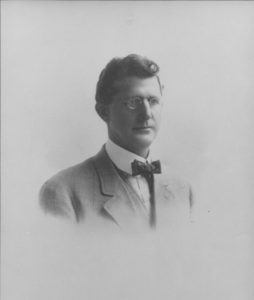 In 1858, Rancho Yerba Buena would be defended again from newcomers. These named defendants were Chauncey C. Barbour, Truman Andrews, William Raymond, Thomas J. Baxter, Benjamin Kenny, John Aborn, Andrew Gheringer, Thomas Farnsworth, George Osteck, Jacob Newhouse, Patterson Barnard, William McClay and James M. Bottsford. Antonio Chaboya would name these thirteen families even though approximately 500 people occupied Rancho Yerba Buena illegally. These Evergreen residents would have just be looking for their space in a growing country, finding their way to one of the prettiest, most inspiring places. I would try to hold on to my home, too.
In 1858, Rancho Yerba Buena would be defended again from newcomers. These named defendants were Chauncey C. Barbour, Truman Andrews, William Raymond, Thomas J. Baxter, Benjamin Kenny, John Aborn, Andrew Gheringer, Thomas Farnsworth, George Osteck, Jacob Newhouse, Patterson Barnard, William McClay and James M. Bottsford. Antonio Chaboya would name these thirteen families even though approximately 500 people occupied Rancho Yerba Buena illegally. These Evergreen residents would have just be looking for their space in a growing country, finding their way to one of the prettiest, most inspiring places. I would try to hold on to my home, too.
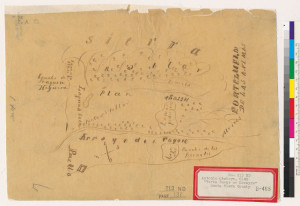 In 1860, Antonio Chaboya would be successful in court and be granted his eviction of the homesteaders, but there were riots as Sheriff John Murphy tried to enforce the law.
In 1860, Antonio Chaboya would be successful in court and be granted his eviction of the homesteaders, but there were riots as Sheriff John Murphy tried to enforce the law.
The Sheriff of San Jose made several attempts to evict the new farmers from Evergreen. Here’s the thing. It’s hard not to empathize with the newcomers. Antonio Chaboya had one of the largest ranchos in all of California then upheld by the United States. Other ranch owners were loosing their court battles and their ranchos, including Antonio Chaboya’s brothers. Chaboya couldn’t even have it surveyed often enough to keep people from setting up shop long term.
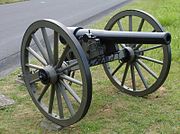 In 1861, Evergreen residents would have the support of the rest of Santa Clara County. Sherriff’s officers didn’t want to arm themselves and serve the eviction notices and force farmers to quit their property. Of 600 Officers, none wanted to perform the duties asked of them so Sheriff Murphy excused them for their duty. Evergreen residents would march the 8 miles into downtown San Jose to St. James Park and the footsteps of the court to contest the eviction. During another attempt, the towns of Saratoga, Berryessa and Santa Clara sent over 2000 troops in support of the new residents. Saratoga even brought a cannon to hold off the eviction papers. People in and around the City of San Jose would come to Evergreen’s aid and empathize with their struggles. The Sheriff Murphy must have supported Evergreen farmers in some way, because he later married the daughter of John Aborn, Miss Maddie.
In 1861, Evergreen residents would have the support of the rest of Santa Clara County. Sherriff’s officers didn’t want to arm themselves and serve the eviction notices and force farmers to quit their property. Of 600 Officers, none wanted to perform the duties asked of them so Sheriff Murphy excused them for their duty. Evergreen residents would march the 8 miles into downtown San Jose to St. James Park and the footsteps of the court to contest the eviction. During another attempt, the towns of Saratoga, Berryessa and Santa Clara sent over 2000 troops in support of the new residents. Saratoga even brought a cannon to hold off the eviction papers. People in and around the City of San Jose would come to Evergreen’s aid and empathize with their struggles. The Sheriff Murphy must have supported Evergreen farmers in some way, because he later married the daughter of John Aborn, Miss Maddie.
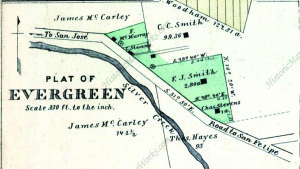 Rancho Yerba Buena and Antonio Chaboya was now saddled with a ton of debt mounting from his legal cases against squatters. The Chaboya family was land rich but cash poor. He couldn’t also continue to pursue this eviction and hold on to his property. Antonio Chaboya pursued the peaceful solution which would change Evergreen forever. First, Antonio and his family settled debts to his team of attorneys by parting away the asset he had in abundance, land. Lawyers J.B. Hart, Hiatt R. Hepburn, Henry Wilkins and William Matthews would be the first legal residents, along with John Tully, of the Evergreen are. The lawyers would be compensated for their legal fees in the sale of these large properties. After portions of Hart’s property and Matthews’s property were sold to farmers like the Smith Family, James McCarley and the Stevens Family, the Village of Evergreen was born, with an epicenter of Evergreen Road and San Felipe and White Roads.
Rancho Yerba Buena and Antonio Chaboya was now saddled with a ton of debt mounting from his legal cases against squatters. The Chaboya family was land rich but cash poor. He couldn’t also continue to pursue this eviction and hold on to his property. Antonio Chaboya pursued the peaceful solution which would change Evergreen forever. First, Antonio and his family settled debts to his team of attorneys by parting away the asset he had in abundance, land. Lawyers J.B. Hart, Hiatt R. Hepburn, Henry Wilkins and William Matthews would be the first legal residents, along with John Tully, of the Evergreen are. The lawyers would be compensated for their legal fees in the sale of these large properties. After portions of Hart’s property and Matthews’s property were sold to farmers like the Smith Family, James McCarley and the Stevens Family, the Village of Evergreen was born, with an epicenter of Evergreen Road and San Felipe and White Roads.
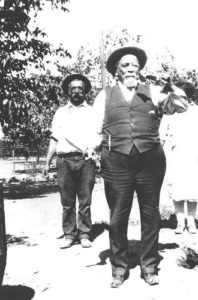 Antonio Chaboya’s family would finally profit off of the sale of their own real estate in 1875 with the sale of John Hassler and George Kettmann acquisition off of then Evergreen Road. From this transaction, life long friendships would be made between the Kettmann and Chaboya clans. The Chaboyas would come to grips with the changing times and downsize their lands considerably. The Chaboya family would continue to own farms up and down Quimby Road for another 50+ years.
Antonio Chaboya’s family would finally profit off of the sale of their own real estate in 1875 with the sale of John Hassler and George Kettmann acquisition off of then Evergreen Road. From this transaction, life long friendships would be made between the Kettmann and Chaboya clans. The Chaboyas would come to grips with the changing times and downsize their lands considerably. The Chaboya family would continue to own farms up and down Quimby Road for another 50+ years.
 In Evergreen, this was huge news at the time. It would soon be an event everyone wanted to forget quickly. Evergreen farmers like John Aborn, Thomas Baxter, Thomas Farnsworth, George Osterk and William McClay would stay in town and raise their families in Evergreen even after the court cases and eviction situation. Though not a non-violent protest, luckily this was settled without bloodshed. It must have been so hard to part with the big, beautiful Rancho Yerba Buena, but what the Chaboyas made room for was for new neighbors and a developing California. Soon after, Evergreen would be planted with orchards, vineyards and hayfields. Here’s some of the artwork that incorporates these players, even if we omit the event for the most part.
In Evergreen, this was huge news at the time. It would soon be an event everyone wanted to forget quickly. Evergreen farmers like John Aborn, Thomas Baxter, Thomas Farnsworth, George Osterk and William McClay would stay in town and raise their families in Evergreen even after the court cases and eviction situation. Though not a non-violent protest, luckily this was settled without bloodshed. It must have been so hard to part with the big, beautiful Rancho Yerba Buena, but what the Chaboyas made room for was for new neighbors and a developing California. Soon after, Evergreen would be planted with orchards, vineyards and hayfields. Here’s some of the artwork that incorporates these players, even if we omit the event for the most part. 
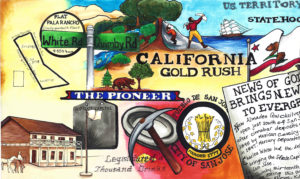
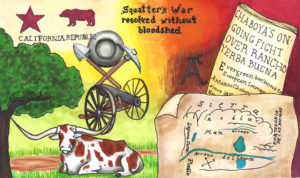
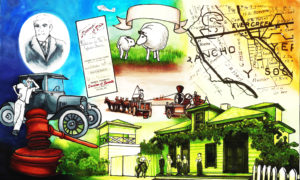
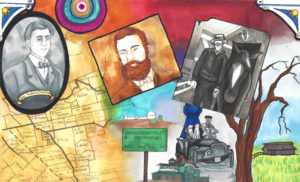
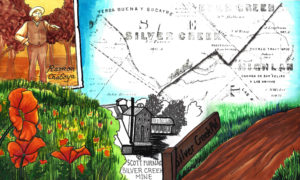
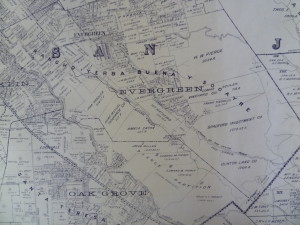 There are some motifs which reoccur throughout the Evergreen Mural Walk artwork. Let’s be transparent about what they are because these themes will eventually amount to be the identity of the Evergreen Community in different stages of its history. A common denominator which reoccurs several times within the artwork is Evergreen’s agricultural prides. One of those were our vineyards and its grapes.
There are some motifs which reoccur throughout the Evergreen Mural Walk artwork. Let’s be transparent about what they are because these themes will eventually amount to be the identity of the Evergreen Community in different stages of its history. A common denominator which reoccurs several times within the artwork is Evergreen’s agricultural prides. One of those were our vineyards and its grapes.
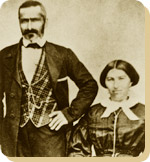
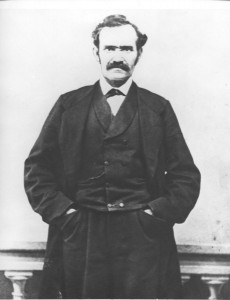 California would have its own wild grape before immigrants began colonizing. The California Missions would grow grapes by the Spanish, but not fancy ones. The Pellier family from Evergreen would bring European grape varietals over from their Native France in the 1850’s and ignite the California Wine Industry.
California would have its own wild grape before immigrants began colonizing. The California Missions would grow grapes by the Spanish, but not fancy ones. The Pellier family from Evergreen would bring European grape varietals over from their Native France in the 1850’s and ignite the California Wine Industry.
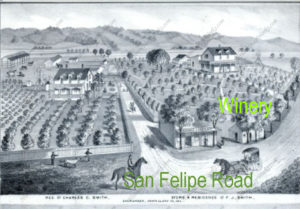 Evergreen was a town that began alongside the California Wine Industry. One of the first businesses in Evergreen would be opened by town founder, Francis J. Smith. The Smith Winery off of San Felipe Road at the epicenter of Evergreen. openeing next door to the family’s general store. I will do some further research whether or not this is the same structure the beauty salon opened in at the same location today.
Evergreen was a town that began alongside the California Wine Industry. One of the first businesses in Evergreen would be opened by town founder, Francis J. Smith. The Smith Winery off of San Felipe Road at the epicenter of Evergreen. openeing next door to the family’s general store. I will do some further research whether or not this is the same structure the beauty salon opened in at the same location today.
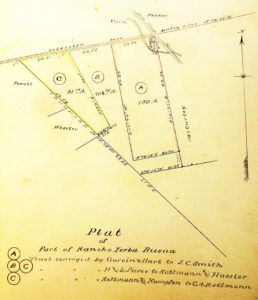 The Kettmann clan would boast about their hundreds of acres vineyards, even keeping them planted even through Prohibition when many farmers abandoned them. The Kettmann family profited off of the sales made for illegal winemaking operations.
The Kettmann clan would boast about their hundreds of acres vineyards, even keeping them planted even through Prohibition when many farmers abandoned them. The Kettmann family profited off of the sales made for illegal winemaking operations.
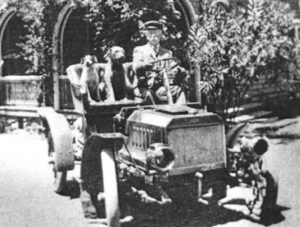 William Wehner, a German painter coming to California by way of Chicago, would who come to Evergreen and build the Wehner Mansion or Villa Lomas Azules in 1891 by an influential skyscraper architect. From the Mansion built for winemaking, Wehner would grow award winning white varieties of wine. The Villa Lomas Azules, or Blue Hills Estate, would house winery operations for almost 75 years in Evergreen.
William Wehner, a German painter coming to California by way of Chicago, would who come to Evergreen and build the Wehner Mansion or Villa Lomas Azules in 1891 by an influential skyscraper architect. From the Mansion built for winemaking, Wehner would grow award winning white varieties of wine. The Villa Lomas Azules, or Blue Hills Estate, would house winery operations for almost 75 years in Evergreen.
 Dr. C. C. Babb, Mayor John A. Quinby (Quimby), and farmer John Avena would also be noted as having vineyards in the Village of Evergreen in the early 1900’s. I am fairly certain smaller vineyards would have existed throughout Evergreen for personal use. Homesteads had to be self-sufficient as possible in those days. These were what was found in Business Directories until 1902.
Dr. C. C. Babb, Mayor John A. Quinby (Quimby), and farmer John Avena would also be noted as having vineyards in the Village of Evergreen in the early 1900’s. I am fairly certain smaller vineyards would have existed throughout Evergreen for personal use. Homesteads had to be self-sufficient as possible in those days. These were what was found in Business Directories until 1902.
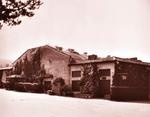
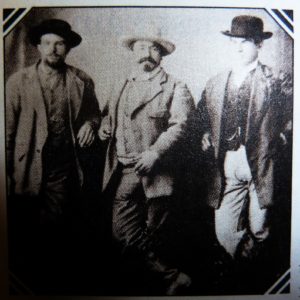 The Pellier brothers plants would live on, but their French winemaking tradition would be passed down as well. Henrietta Pellier, daughter of Pierre, would marry Mr. Mirassou and the couple began the Mirassou Winemaking Family still being cultivated in Evergreen today. After Mirassou’s passing, her new husband would also continue to make wine in Evergreen.
The Pellier brothers plants would live on, but their French winemaking tradition would be passed down as well. Henrietta Pellier, daughter of Pierre, would marry Mr. Mirassou and the couple began the Mirassou Winemaking Family still being cultivated in Evergreen today. After Mirassou’s passing, her new husband would also continue to make wine in Evergreen.
 The East-side Fruit Growers Association would assist East San Jose and Evergreen farmers negotiate with Packing Companies. Nearby Barron-Gray would need grapes for their first-to-market Fruit Cocktail. Large winemaking operations would outsource certain varieties which they themselves couldn’t grow. Grapes are fickle fruit. They liked the climate and hillsides of Evergreen. This East-side trade association would eventually be goggled up by the California Prune and Apricot Growers Association, which would become SunKist Fruit.
The East-side Fruit Growers Association would assist East San Jose and Evergreen farmers negotiate with Packing Companies. Nearby Barron-Gray would need grapes for their first-to-market Fruit Cocktail. Large winemaking operations would outsource certain varieties which they themselves couldn’t grow. Grapes are fickle fruit. They liked the climate and hillsides of Evergreen. This East-side trade association would eventually be goggled up by the California Prune and Apricot Growers Association, which would become SunKist Fruit.

 An Italian immigrant, Benjamino Cribari, would come to own the famed Wehner Mansion in 1933, then known as the Cribari Mansion, and plant vineyards up the steps of the Evergreen foothills and extended the winery’s property in 1940. The Cribari’s family specialty would be table and altar wines. Benjamino’s children and grandchildren would grow to cultivate the Evergreen vineyards into the 1970’s. Silver Creek Winery is still operated by the Cribari family today.
An Italian immigrant, Benjamino Cribari, would come to own the famed Wehner Mansion in 1933, then known as the Cribari Mansion, and plant vineyards up the steps of the Evergreen foothills and extended the winery’s property in 1940. The Cribari’s family specialty would be table and altar wines. Benjamino’s children and grandchildren would grow to cultivate the Evergreen vineyards into the 1970’s. Silver Creek Winery is still operated by the Cribari family today.
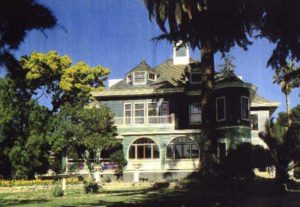
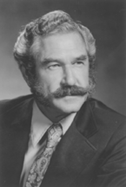 Later generations of the Mirassou family vintners would lease the basement of the Cribari Mansion for wine storage. The Wehner/Azul Lomas Villa/Cribari Mansion is now located inside the Villages Retirement Community nestled into Evergreen hills. Today, the mansion is a historic landmark but needs a little love.
Later generations of the Mirassou family vintners would lease the basement of the Cribari Mansion for wine storage. The Wehner/Azul Lomas Villa/Cribari Mansion is now located inside the Villages Retirement Community nestled into Evergreen hills. Today, the mansion is a historic landmark but needs a little love.
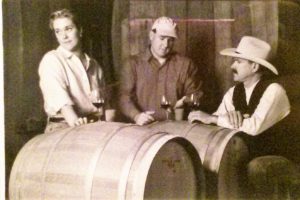
 The Mirassou Wine Family would be the oldest winemaking family in California. Mirassou Winery today continues to be a landmark on Aborn Road. The fourth generation would take over the wine operations in 1966. The wine operations would move, due to suburban development and depletion of soil nutrients. That having been said, this is an ungoing love affair for the Mirassou family who continue to make wine and call Evergreen home.
The Mirassou Wine Family would be the oldest winemaking family in California. Mirassou Winery today continues to be a landmark on Aborn Road. The fourth generation would take over the wine operations in 1966. The wine operations would move, due to suburban development and depletion of soil nutrients. That having been said, this is an ungoing love affair for the Mirassou family who continue to make wine and call Evergreen home.
Vineyards in Evergreen may be scarce today, but we owe credit to the grapevines of Evergreen’s glory days. Here’s the artwork conceived with our Evergreen vineyards in mind.
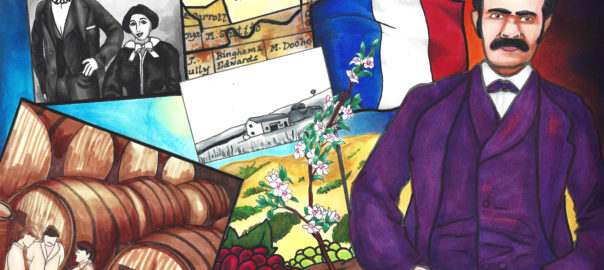
 My grandmother used to own a home off Norwood Avenue and have volunteer grapevines charging up through her hillside backyard. Little did she know, my grandmother’s house was a part of the Pellier estate, one of the largest in early Evergreen.
My grandmother used to own a home off Norwood Avenue and have volunteer grapevines charging up through her hillside backyard. Little did she know, my grandmother’s house was a part of the Pellier estate, one of the largest in early Evergreen.
 The Pellier Brothers would eventually come to call Evergreen home in the late 1850’s. Before that, the Pelliers would live in the Pueblo of San Jose as California became a State and as San Jose became its Capitol in the early 1850’s. Luis Pellier would get creative with his brother Pierre while gold panning in 1848, changing San Jose and California forever once again.
The Pellier Brothers would eventually come to call Evergreen home in the late 1850’s. Before that, the Pelliers would live in the Pueblo of San Jose as California became a State and as San Jose became its Capitol in the early 1850’s. Luis Pellier would get creative with his brother Pierre while gold panning in 1848, changing San Jose and California forever once again.
 By bringing over their cions , seeds, clippings and plantings from their Native Country of France, Luis, Pierre and Jean Pellier would set fire to the huge California Fruit Industry. Basically, there was no industry before that, as Mission lands and their predictable orchards were left unattended and were being reclaimed by wilderness. The California Missions were secularized by Mexico in 1833. By the time the Pelliers came to California, the Missions weren’t even holding Catholic Mass.
By bringing over their cions , seeds, clippings and plantings from their Native Country of France, Luis, Pierre and Jean Pellier would set fire to the huge California Fruit Industry. Basically, there was no industry before that, as Mission lands and their predictable orchards were left unattended and were being reclaimed by wilderness. The California Missions were secularized by Mexico in 1833. By the time the Pelliers came to California, the Missions weren’t even holding Catholic Mass.
In fact, Evergreen before the Pellier journeys would’ve been cattle grazing land. After the Pellier journeys, Santa Clara Valley would become known as the Valley of Heart’s Delights.
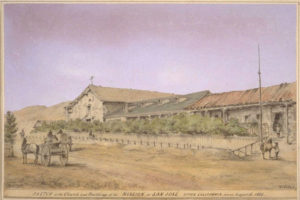 What was grown in the Spanish Period at the Franciscan Missions in California from 1769-1821? I’m so glad you asked. The indigenous native peoples, priests and monks grew “mission grapes”, apples, lemons and oranges, beans, veggies and olives for the most part. Olive Oil would be a source of pride for the Missions. The “Mission Grape” of the Spanish colonists was a Vitus vinifera, a Spanish variety that was black and blue in color. The clippings would’ve been brought over sea with Cortez’s colonization of Mexico or New Spain. Only problem was less than 1000 acres of vineyards would be cultivated in California until the 1850’s. These plants were a dying off as people left the Missions. The Mission Grape would have been made into wine for Sacraments. The Spanish may have brought apricots as well, originating in Turkey. There was an indigenous plum tree present in California. A wild grape, too, would be indigenous. Mission San Jose would be one of the biggest producers, but would’ve been closed for several years by the time the Pelliers set sail.
What was grown in the Spanish Period at the Franciscan Missions in California from 1769-1821? I’m so glad you asked. The indigenous native peoples, priests and monks grew “mission grapes”, apples, lemons and oranges, beans, veggies and olives for the most part. Olive Oil would be a source of pride for the Missions. The “Mission Grape” of the Spanish colonists was a Vitus vinifera, a Spanish variety that was black and blue in color. The clippings would’ve been brought over sea with Cortez’s colonization of Mexico or New Spain. Only problem was less than 1000 acres of vineyards would be cultivated in California until the 1850’s. These plants were a dying off as people left the Missions. The Mission Grape would have been made into wine for Sacraments. The Spanish may have brought apricots as well, originating in Turkey. There was an indigenous plum tree present in California. A wild grape, too, would be indigenous. Mission San Jose would be one of the biggest producers, but would’ve been closed for several years by the time the Pelliers set sail.

 What did the Pellier brothers from France with help from the Delmas brothers bring to the Port of Alviso and to Santa Clara County? Luis and Pierre Pellier would pull into port and sell peach, pear, plum, cherry, apple and prune cions off their boat in Alviso in the 1850’s. Certainly his most famous contribution was the Angen ‘D Petit Prune, but the Valley of Heart Delight would begin with these trips to France and these cions. With the driving force of the Pelliers’ new varietals, the Fruit Industry would soon provide thousands of jobs, would drive people to come to the Santa Clara Valley and would bring spark the Fruit Canning business. We, in California, still feel the benefit of their actions today.
What did the Pellier brothers from France with help from the Delmas brothers bring to the Port of Alviso and to Santa Clara County? Luis and Pierre Pellier would pull into port and sell peach, pear, plum, cherry, apple and prune cions off their boat in Alviso in the 1850’s. Certainly his most famous contribution was the Angen ‘D Petit Prune, but the Valley of Heart Delight would begin with these trips to France and these cions. With the driving force of the Pelliers’ new varietals, the Fruit Industry would soon provide thousands of jobs, would drive people to come to the Santa Clara Valley and would bring spark the Fruit Canning business. We, in California, still feel the benefit of their actions today.
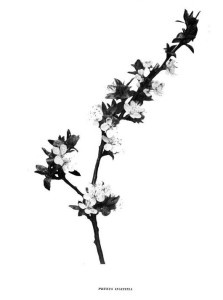 The French Prune brought to California in 1854 was considered perfect for drying and dipping. After it was grafted on to a California plum tree, it became an instant success. Pellier raised orchards of prunes and a nursery famed in downtown San Jose. The Angen ‘D Petit Prune was immediately adopted by other Santa Clara Valley’s orchardists. This would become Santa Clara County’s identity to the rest of the United States through the 1950’s when Silicon Valley bumped it. The prune’s attributes, complimentary for drying and dipping, would make them a popular commercial export.
The French Prune brought to California in 1854 was considered perfect for drying and dipping. After it was grafted on to a California plum tree, it became an instant success. Pellier raised orchards of prunes and a nursery famed in downtown San Jose. The Angen ‘D Petit Prune was immediately adopted by other Santa Clara Valley’s orchardists. This would become Santa Clara County’s identity to the rest of the United States through the 1950’s when Silicon Valley bumped it. The prune’s attributes, complimentary for drying and dipping, would make them a popular commercial export.
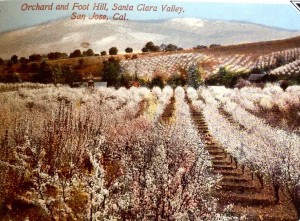 The Prune Orchards would quickly spread all over Santa Clara County, the Valley of Heart’s Delight, and then all over California. The French Prune ignited the whole California Fruit Industry, as only dried fruits could be exported. The Mexican Government had a hard time settling California. California through the Mexican Period (1821-1848) wouldn’t be well-known for its awesome agriculture, despite the rich soil noted by the Spanish Missionaries. Evergreen was a grazing land. The Missions closing meant the crops became scarce. Pellier’s strategy was inspired by the high price of fruit.
The Prune Orchards would quickly spread all over Santa Clara County, the Valley of Heart’s Delight, and then all over California. The French Prune ignited the whole California Fruit Industry, as only dried fruits could be exported. The Mexican Government had a hard time settling California. California through the Mexican Period (1821-1848) wouldn’t be well-known for its awesome agriculture, despite the rich soil noted by the Spanish Missionaries. Evergreen was a grazing land. The Missions closing meant the crops became scarce. Pellier’s strategy was inspired by the high price of fruit.
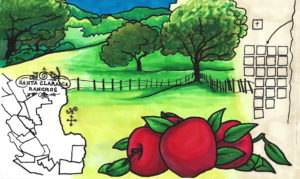 A dollar gets you much less today, so you will naturally need more dollars to obtain the same product over 100 years ago. Here’s an exception to that rule. Before Luis and Pierre Pellier’s travels, an apple would cost over a dollar. Today, $2.00 would get you a pound or several apples. The demand was so high for apples and produce, most people couldn’t afford them. You could forget about apple pie. That would’ve cost you over $20.00 in apples alone in 1850’s California. If you were in California in the 1850’s, you were a pioneer, gold panning and roughing it. Their business idea was brilliant. I wonder if they knew about the Manifest Destiny campaign that would send thousands of newcomers to California in a few short years.
A dollar gets you much less today, so you will naturally need more dollars to obtain the same product over 100 years ago. Here’s an exception to that rule. Before Luis and Pierre Pellier’s travels, an apple would cost over a dollar. Today, $2.00 would get you a pound or several apples. The demand was so high for apples and produce, most people couldn’t afford them. You could forget about apple pie. That would’ve cost you over $20.00 in apples alone in 1850’s California. If you were in California in the 1850’s, you were a pioneer, gold panning and roughing it. Their business idea was brilliant. I wonder if they knew about the Manifest Destiny campaign that would send thousands of newcomers to California in a few short years.
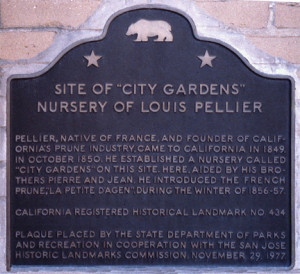 Luis Pellier would open “City Gardens” and sell his cions and young trees to the rest of Santa Clara County’s farmers in 1850. This was the epicenter of the Valley of Heart’s Delight, creating a path to the American Dream for farmers coming to California. The Pellier brothers would leave their popular nursery and orchards in downtown San Jose, where Pellier Park is today, and move to Evergreen to plant acres of vineyards in later 1850’s.
Luis Pellier would open “City Gardens” and sell his cions and young trees to the rest of Santa Clara County’s farmers in 1850. This was the epicenter of the Valley of Heart’s Delight, creating a path to the American Dream for farmers coming to California. The Pellier brothers would leave their popular nursery and orchards in downtown San Jose, where Pellier Park is today, and move to Evergreen to plant acres of vineyards in later 1850’s.
In 1858, Luis Pellier, now Evergreen resident, would present nine varieties of foreign grapes at the national trade show, being described as “unequalled to any other of the same variety”. Luis Pellier’s introduction of new grapes would almost single handedly create the California Wine Industry as well. Grafted on to Mission vines and indigenous vines, these grapes is really well in Evergreen. When wine was made and the word spread, the Pelliers struck gold again.
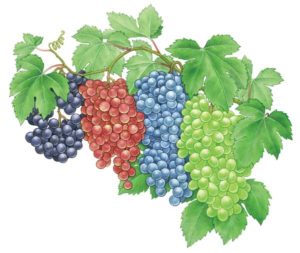 The Pellier brothers are originally from the Bordeaux region of France, well-known for its Wine Industry. The Pellier boys would’ve grown up cultivating their parents’ vineyards and orchards in France. Cabernet Sauvignon, Cabernet Franc, Merlot, Petit Verdot and Malbec would’ve been easily found in that region of France. Folle Blanche, the ultimate brandy making grape, has been contributed to Luis Pellier. A Black Burgundy grape, another brandy grape, would also be brought to California by Pellier. A Mourvedre vine, similar to a Mission Grape but a French strain, has also been drawn back to Pellier. These would become popular in Zinfandel vineyards. Chasselas Fontainebleau, French Colombar and Madelaine are green grapes for white wines that have also been contributed to the Pellier brothers trips to France.
The Pellier brothers are originally from the Bordeaux region of France, well-known for its Wine Industry. The Pellier boys would’ve grown up cultivating their parents’ vineyards and orchards in France. Cabernet Sauvignon, Cabernet Franc, Merlot, Petit Verdot and Malbec would’ve been easily found in that region of France. Folle Blanche, the ultimate brandy making grape, has been contributed to Luis Pellier. A Black Burgundy grape, another brandy grape, would also be brought to California by Pellier. A Mourvedre vine, similar to a Mission Grape but a French strain, has also been drawn back to Pellier. These would become popular in Zinfandel vineyards. Chasselas Fontainebleau, French Colombar and Madelaine are green grapes for white wines that have also been contributed to the Pellier brothers trips to France.

 Even though the Pellier brothers would become famous for their perfect prune trees, descendants of the Pelliers would be boastful of its Pinot Noir grapes and wines. These certainly would’ve been brought back from France in the 1850’s by their forefathers. Pellier descendants, the Mirassou family, have called Evergreen home for over 150 years. Mirassou Winery operated off of Aborn Road for 100 years and continues to be a landmark in Evergreen. Today, the Mirassou Winemaking Family continues to be the oldest Wine Family in California and continue to call Evergreen home.
Even though the Pellier brothers would become famous for their perfect prune trees, descendants of the Pelliers would be boastful of its Pinot Noir grapes and wines. These certainly would’ve been brought back from France in the 1850’s by their forefathers. Pellier descendants, the Mirassou family, have called Evergreen home for over 150 years. Mirassou Winery operated off of Aborn Road for 100 years and continues to be a landmark in Evergreen. Today, the Mirassou Winemaking Family continues to be the oldest Wine Family in California and continue to call Evergreen home.
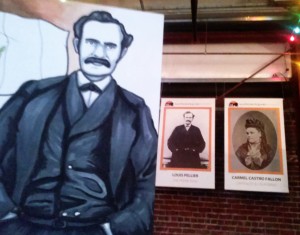 Before this point, varieties of wine could only be found in Europe, mainly in France and Spain, and imported into the United States. California wasn’t well settled, but that would change fairly rapidly. Again, Missions harvested Mission Grapes for altar wines and brandy, but there wasn’t much more out there. What was out there was going away with the Missions closing. With the Gold Rush and Manifest Destiny in full affect, the Pelliers would be at the right place at the right time to make something amazing happen. California is the second capitol of wine today. It would difficult to envision Napa Valley today without its vineyards. 80% of these vines can be traced back to that Alviso Port. California’s Fruit Industry was initiated by Pellier’s cions. Luis Pellier is acknowledged as one of the founding fathers of San Jose. Here’s the artwork specific to the Pellier Family past and its present.
Before this point, varieties of wine could only be found in Europe, mainly in France and Spain, and imported into the United States. California wasn’t well settled, but that would change fairly rapidly. Again, Missions harvested Mission Grapes for altar wines and brandy, but there wasn’t much more out there. What was out there was going away with the Missions closing. With the Gold Rush and Manifest Destiny in full affect, the Pelliers would be at the right place at the right time to make something amazing happen. California is the second capitol of wine today. It would difficult to envision Napa Valley today without its vineyards. 80% of these vines can be traced back to that Alviso Port. California’s Fruit Industry was initiated by Pellier’s cions. Luis Pellier is acknowledged as one of the founding fathers of San Jose. Here’s the artwork specific to the Pellier Family past and its present.
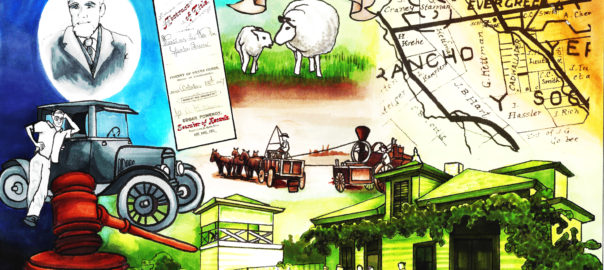
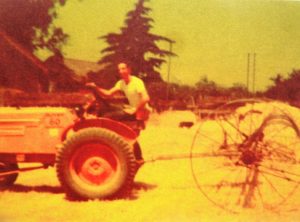 Along the research for this Evergreen project, I have met the most fantastic people. If this guy needed a new best friend, I would be first in line. I discussed with Honorable Judge Gerhard J. Kettmann (Jerry) the four generations of his family who blossomed in Evergreen and continue to call Evergreen home today. He’s the ultimate expert, having written a book and working on another about their family history. What is extraordinary about the Kettmann family, making it a crucial piece of our mural series, is their witness to almost 150 years of Evergreen’s development. We will start by discussing how the Kettmann’s came to America. The United States is a country of immigrants. We would all come here from somewhere else. I think that’s the first thing that bonds all of us Evergreen residents together.
Along the research for this Evergreen project, I have met the most fantastic people. If this guy needed a new best friend, I would be first in line. I discussed with Honorable Judge Gerhard J. Kettmann (Jerry) the four generations of his family who blossomed in Evergreen and continue to call Evergreen home today. He’s the ultimate expert, having written a book and working on another about their family history. What is extraordinary about the Kettmann family, making it a crucial piece of our mural series, is their witness to almost 150 years of Evergreen’s development. We will start by discussing how the Kettmann’s came to America. The United States is a country of immigrants. We would all come here from somewhere else. I think that’s the first thing that bonds all of us Evergreen residents together.
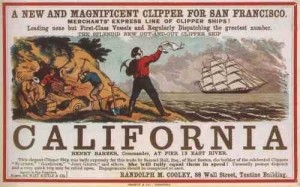 Johan Hermann Gerhard Kettmann (George) was the youngest of 8 siblings, born in 1827 in Kettenkamp, Germany. His someday wife would be another German immigrant growing up only 8 miles away in Germany. Gerhard Kettmann would leave his Native Country of Germany at the age of 22 and arrive in the Port of New Orleans in 1849. Gerhard Kettmann would travel from Louisiana through Panama to come to Sutter County, California in 1853 and pan for gold. With a little luck along the Yuba River and Feather River, George would come to purchase 160 acres of land in Sutter County.
Johan Hermann Gerhard Kettmann (George) was the youngest of 8 siblings, born in 1827 in Kettenkamp, Germany. His someday wife would be another German immigrant growing up only 8 miles away in Germany. Gerhard Kettmann would leave his Native Country of Germany at the age of 22 and arrive in the Port of New Orleans in 1849. Gerhard Kettmann would travel from Louisiana through Panama to come to Sutter County, California in 1853 and pan for gold. With a little luck along the Yuba River and Feather River, George would come to purchase 160 acres of land in Sutter County.
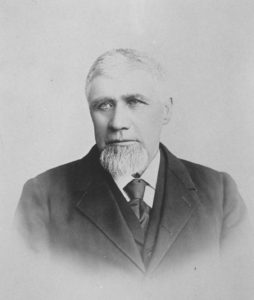 George Kettmann would marry Bernadina Torbrecke in Marysville, California, but there’s a very cute folkloric story to this pairing. Dina was first cousin of the Krehe Family, who would also come to live in Evergreen. Henry and Bernard Krehe would invite their unmarried family members from Germany to come to the United States. George Kettmann, being close friends with the Krehes, got to make his pick first and chose Bernadina.
George Kettmann would marry Bernadina Torbrecke in Marysville, California, but there’s a very cute folkloric story to this pairing. Dina was first cousin of the Krehe Family, who would also come to live in Evergreen. Henry and Bernard Krehe would invite their unmarried family members from Germany to come to the United States. George Kettmann, being close friends with the Krehes, got to make his pick first and chose Bernadina.
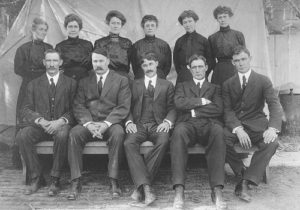 Whether that story was true or not, the German couple was married in Marysville, California in January of 1858. George and Bernadina Kettmann would have eleven children. The Kettmann clan would begin grow in Sutter County on the acreage along the Feather River, operating a general store known as “Five Mile House”. In addition to the store along the highway, George also would raise a herd of sheep and cattle on his 160 acres before moving the whole herd, family and all, to the Santa Clara County.
Whether that story was true or not, the German couple was married in Marysville, California in January of 1858. George and Bernadina Kettmann would have eleven children. The Kettmann clan would begin grow in Sutter County on the acreage along the Feather River, operating a general store known as “Five Mile House”. In addition to the store along the highway, George also would raise a herd of sheep and cattle on his 160 acres before moving the whole herd, family and all, to the Santa Clara County.
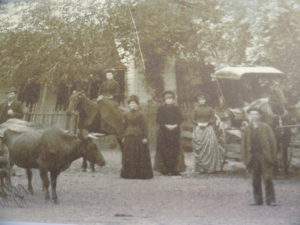 George Kettmann showed interest in Santa Clara County in the 1850’s, after traveling their with a family member. With the new variety of fruit being introduced to the agricultural field stimulated by Luis and Pierre Pellier, Kettmann made his move to Evergreen, then a tiny farming town. George Kettmann would purchased a portion of Rancho Yerba Buena in 1867 near downtown Evergreen along Evergreen Road. In fact, this first Evergreen parcel purchased by the Kettmanns belonged to the Chaboya Family’s attorney, William Matthews, and had been paid land in order to settle those legal fees.
George Kettmann showed interest in Santa Clara County in the 1850’s, after traveling their with a family member. With the new variety of fruit being introduced to the agricultural field stimulated by Luis and Pierre Pellier, Kettmann made his move to Evergreen, then a tiny farming town. George Kettmann would purchased a portion of Rancho Yerba Buena in 1867 near downtown Evergreen along Evergreen Road. In fact, this first Evergreen parcel purchased by the Kettmanns belonged to the Chaboya Family’s attorney, William Matthews, and had been paid land in order to settle those legal fees.
 This initial parcel was a perfect 150 acre rectangle with the exception of the land that had been donated to the Evergreen Elementary School. Evergreen’s schoolhouse would be where the shopping center with the Valero and Wells Fargo is today. The Evergreen Elementary School would be located here until 1892, when it moved a little down San Felipe Road. Kettmann Road at Aborn Road is very near this school site, but it would’ve been on the other side of Thompson Creek, then Dry Creek. Let it be known though that even the attorney didn’t donate this land. That carried over on the Title from the previous owner, Mr. Cadwallader.
This initial parcel was a perfect 150 acre rectangle with the exception of the land that had been donated to the Evergreen Elementary School. Evergreen’s schoolhouse would be where the shopping center with the Valero and Wells Fargo is today. The Evergreen Elementary School would be located here until 1892, when it moved a little down San Felipe Road. Kettmann Road at Aborn Road is very near this school site, but it would’ve been on the other side of Thompson Creek, then Dry Creek. Let it be known though that even the attorney didn’t donate this land. That carried over on the Title from the previous owner, Mr. Cadwallader.
 The Kettmann family didn’t stop with that first purchase of 147.7 acres in downtown Evergreen. Through an interesting purchase and exchange of land with fellow German immigrants, the Hassler family, the Kettmanns obtained another 103.10 acres in 1875. The Hasslers and Kettmanns separated the properties along the Touchard Line, which falls on part of present day Neiman Boulevard. Modern day Kettmann Road, where the Evergreen Library Branch is located on Aborn Road, runs between these two land purchases. As Evergreen folklore would have it, this acquisition was the only purchase Antonio Chaboya’s family actually profited off of after their debts were settled trying to evict their new neighbors. In 1881, one of George Kettmann’s sons would become an Evergreen landowner as well.
The Kettmann family didn’t stop with that first purchase of 147.7 acres in downtown Evergreen. Through an interesting purchase and exchange of land with fellow German immigrants, the Hassler family, the Kettmanns obtained another 103.10 acres in 1875. The Hasslers and Kettmanns separated the properties along the Touchard Line, which falls on part of present day Neiman Boulevard. Modern day Kettmann Road, where the Evergreen Library Branch is located on Aborn Road, runs between these two land purchases. As Evergreen folklore would have it, this acquisition was the only purchase Antonio Chaboya’s family actually profited off of after their debts were settled trying to evict their new neighbors. In 1881, one of George Kettmann’s sons would become an Evergreen landowner as well.
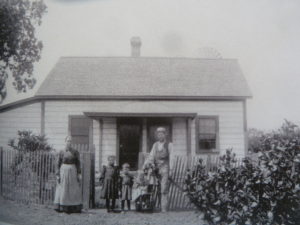 The eldest of eleven siblings, Clemens Andrew Kettmann was born on the Marysville ranch in 1858, less than a year after the couple wed. Clemens would’ve made the journey with his father, George, the large sheep herd and fellow cowboys to Evergreen in 1868. Clemens Kettmann was the only son to make the journey at 9 years old. Young Clem only had sisters at that point. The trek from Marysville with the herd must’ve taken over a month on horseback. The rest of the family would come in 1869, after Dina gave birth to another sister. From the Evergreen homestead, the clan would continue to raise livestock but also incorporate fruit, vegetables and grain into their business strategy.
The eldest of eleven siblings, Clemens Andrew Kettmann was born on the Marysville ranch in 1858, less than a year after the couple wed. Clemens would’ve made the journey with his father, George, the large sheep herd and fellow cowboys to Evergreen in 1868. Clemens Kettmann was the only son to make the journey at 9 years old. Young Clem only had sisters at that point. The trek from Marysville with the herd must’ve taken over a month on horseback. The rest of the family would come in 1869, after Dina gave birth to another sister. From the Evergreen homestead, the clan would continue to raise livestock but also incorporate fruit, vegetables and grain into their business strategy.
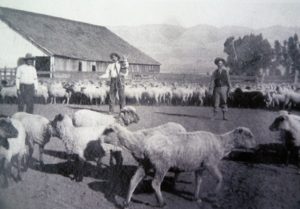 Homestead Laws would allow families to obtain a certain portion of land from the government after cultivating it for 5 years. The Kettmann Family as a group diversified this ranching strategy in the heart of Evergreen and accentuated their grazing potential with homestead purchases along the back side of Mt. Hamilton Ranch. These adjoining Mt. Hamilton homesteads weren’t fantastic for farming, but it could and would be done with altered harvesting equipment. The Kettman clan had so many acres in the Mt. Diablo Mountain Range, this area would become known as “Kettmann Range”. Lamb and sheep would be a rarity in Evergreen and San Jose at this time. Cattle ranching would’ve been totally ordinary and generally what had been grazing throughout Evergreen for some 50 years beforehand. The Kettmann clan held on to their German heritage by passing on this tradition.
Homestead Laws would allow families to obtain a certain portion of land from the government after cultivating it for 5 years. The Kettmann Family as a group diversified this ranching strategy in the heart of Evergreen and accentuated their grazing potential with homestead purchases along the back side of Mt. Hamilton Ranch. These adjoining Mt. Hamilton homesteads weren’t fantastic for farming, but it could and would be done with altered harvesting equipment. The Kettman clan had so many acres in the Mt. Diablo Mountain Range, this area would become known as “Kettmann Range”. Lamb and sheep would be a rarity in Evergreen and San Jose at this time. Cattle ranching would’ve been totally ordinary and generally what had been grazing throughout Evergreen for some 50 years beforehand. The Kettmann clan held on to their German heritage by passing on this tradition.
 Clemens Kettmann would come to purchase the adjacent parcel to his father’s in 1881, then 23 years old, from Louis Kampfen, another German farmer, who obtained his portion after the Hasslers from the previous Hassler/Kettmann deal. This was 80.18 acres large, literally being the family’s “80 acres”. Kettmann’s friends and cousins, the Krehe Family, would also move in nearby. There was quite the hotspot of German American culture in early Evergreen, with the Smith’s and Stephens Families nearby.
Clemens Kettmann would come to purchase the adjacent parcel to his father’s in 1881, then 23 years old, from Louis Kampfen, another German farmer, who obtained his portion after the Hasslers from the previous Hassler/Kettmann deal. This was 80.18 acres large, literally being the family’s “80 acres”. Kettmann’s friends and cousins, the Krehe Family, would also move in nearby. There was quite the hotspot of German American culture in early Evergreen, with the Smith’s and Stephens Families nearby.
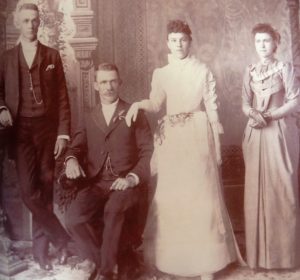 Clemens A. Kettmann would marry a German-American lady, Mary Vollmer, in 1890 at St. Joseph’s Basilica in downtown San Jose. Mary wore an apricot colored dress, how fitting. Clem Kettmann and Mary Vollmer would have seven kids on their Evergreen homestead. This labor force, along with his younger brothers at his father’s homestead next door, would help Clem Kettmann cultivate the land.
Clemens A. Kettmann would marry a German-American lady, Mary Vollmer, in 1890 at St. Joseph’s Basilica in downtown San Jose. Mary wore an apricot colored dress, how fitting. Clem Kettmann and Mary Vollmer would have seven kids on their Evergreen homestead. This labor force, along with his younger brothers at his father’s homestead next door, would help Clem Kettmann cultivate the land.
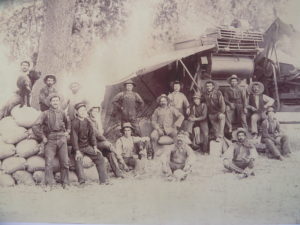 Having a big family in the 19th century was a big deal. You needed help working on the farm. In fact, having eleven children wouldn’t be enough to operate ranches as large as these. The Kettmanns would employ help in the house and on the farm. The children would start picking fruit between school breaks and into adulthood would sew sacks and become a part of the traveling crew harvesting crops all over Evergreen. Harvests were true team efforts. A barter system would be reached for labor and harvesting. Horses were in high demand for plowing and the like. Labor was generally $2.00 a day for a horse and a man. This was a typical scene from the Fowler Threshing Syndicate, harvesting grain. Evergreen was a teambuilding utopia back in the day. Strength in numbers seemed to be a focus.
Having a big family in the 19th century was a big deal. You needed help working on the farm. In fact, having eleven children wouldn’t be enough to operate ranches as large as these. The Kettmanns would employ help in the house and on the farm. The children would start picking fruit between school breaks and into adulthood would sew sacks and become a part of the traveling crew harvesting crops all over Evergreen. Harvests were true team efforts. A barter system would be reached for labor and harvesting. Horses were in high demand for plowing and the like. Labor was generally $2.00 a day for a horse and a man. This was a typical scene from the Fowler Threshing Syndicate, harvesting grain. Evergreen was a teambuilding utopia back in the day. Strength in numbers seemed to be a focus.
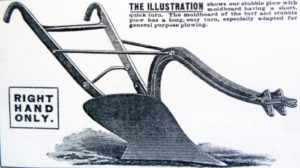 Generations of the Kettmann clan would grow up in Evergreen alongside the Industrial Revolution. George Kettmann would’ve farmed just like he had learned to in his Native Germany, very much by hand. The Farming Industry during this time would transition from horse and plow, pitchforks, sickle and scythe to tractors, threshing machines and haypresses. George’s youngest son, Andrew Kettmann, would develop tools for apricot harvesting. Clem’s children, too, would’ve hand first on experience transitioning from horse pulled threshing crews to tractor or truck pulled rig. The Kettmann clan would continuously learn to adapt their farming techniques as the technology improved. In the 1920’s, Clem’s son, Julius, would open a garage to help fix machines in downtown San Jose after adapting and fixing machinery on the family homestead. This legacy can be seen as descendants now operate the Kettmann Machining, Inc. in San Jose.
Generations of the Kettmann clan would grow up in Evergreen alongside the Industrial Revolution. George Kettmann would’ve farmed just like he had learned to in his Native Germany, very much by hand. The Farming Industry during this time would transition from horse and plow, pitchforks, sickle and scythe to tractors, threshing machines and haypresses. George’s youngest son, Andrew Kettmann, would develop tools for apricot harvesting. Clem’s children, too, would’ve hand first on experience transitioning from horse pulled threshing crews to tractor or truck pulled rig. The Kettmann clan would continuously learn to adapt their farming techniques as the technology improved. In the 1920’s, Clem’s son, Julius, would open a garage to help fix machines in downtown San Jose after adapting and fixing machinery on the family homestead. This legacy can be seen as descendants now operate the Kettmann Machining, Inc. in San Jose.
 George and Clem would both plant orchards on their properties. Clemens Kettmann would plant several acres of apricots with their commercial stock going way up. Mixing his varieties of apricot, Clem created a sweet apricot which was also large and ripened evenly. Clem’s sloped property presented irrigation problems for portions of his orchards. He found the unirrigated crop was sweeter but smaller than the other harvest. These were his apricots. He would find the same to be true of his corn crops. Those that were naturally watered were naturally sweeter.
George and Clem would both plant orchards on their properties. Clemens Kettmann would plant several acres of apricots with their commercial stock going way up. Mixing his varieties of apricot, Clem created a sweet apricot which was also large and ripened evenly. Clem’s sloped property presented irrigation problems for portions of his orchards. He found the unirrigated crop was sweeter but smaller than the other harvest. These were his apricots. He would find the same to be true of his corn crops. Those that were naturally watered were naturally sweeter.
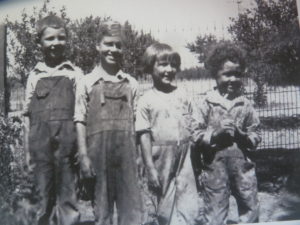 The Kettmann families would plant several acres of prunes and cherry orchards along with their apricots. The clan also had several acres of vineyards also at their Evergreen property. Threshing crews would cultivate over a hundred acres of grain, oats and alfalfa from the Kettmann farms. I never thought about it before, but horses take a lot to feed. If you have horses for plowing, you need acres just to settle your own horses. The Kettmann family would continue to grow and branch out in Evergreen. Into the 1900’s their children would take over the roles running the farms and ranches after their education. Prohibition cause a lot of vintners to pull up their grapevines and retire their wine businesses. The Kettmanns did not however and made a small fortune continuing to sell grapes for underground wine operations. Between these ranches and the Kettmann Range, the Evergreen family was sitting pretty.
The Kettmann families would plant several acres of prunes and cherry orchards along with their apricots. The clan also had several acres of vineyards also at their Evergreen property. Threshing crews would cultivate over a hundred acres of grain, oats and alfalfa from the Kettmann farms. I never thought about it before, but horses take a lot to feed. If you have horses for plowing, you need acres just to settle your own horses. The Kettmann family would continue to grow and branch out in Evergreen. Into the 1900’s their children would take over the roles running the farms and ranches after their education. Prohibition cause a lot of vintners to pull up their grapevines and retire their wine businesses. The Kettmanns did not however and made a small fortune continuing to sell grapes for underground wine operations. Between these ranches and the Kettmann Range, the Evergreen family was sitting pretty.
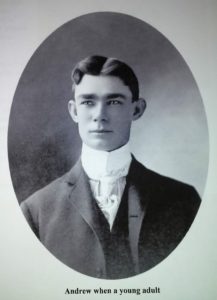
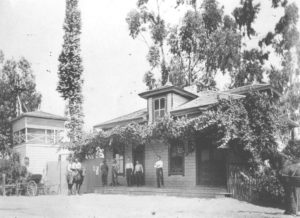 The German American Inventor and all around funny guy, Andrew Kettmann would grow up sewing sacks for grain and maintaining the family farm. George’s son and Clem’s youngest brother, Andy Kettmann would open downtown Evergreen’s second Saloon along San Felipe Road. Andrew Kettmann’s Saloon became increasingly popular amongst quicksilver miners through World War I. This spot would be a hub of culture until 1920 when Prohibition was enforced. Until then, many tipsy tales were told out of Andy’s Saloon.
The German American Inventor and all around funny guy, Andrew Kettmann would grow up sewing sacks for grain and maintaining the family farm. George’s son and Clem’s youngest brother, Andy Kettmann would open downtown Evergreen’s second Saloon along San Felipe Road. Andrew Kettmann’s Saloon became increasingly popular amongst quicksilver miners through World War I. This spot would be a hub of culture until 1920 when Prohibition was enforced. Until then, many tipsy tales were told out of Andy’s Saloon.
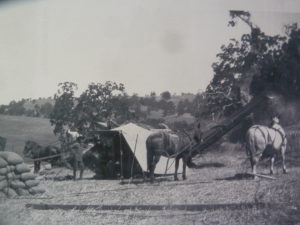 After George’s passing in 1912, his property would be equally divided amongst his eleven children. The Kettmann Family Ranch would continue to modernize with Clem’s son’s, Louis. Louis Kettmann would take Clem’s horse powered ranch into the present with the purchase of a tractor built from tank parts. Large mechanical farming equipment would need to be leased or the old machinery would need to be updated. The rural Village of Evergreen was rapidly changing through the early 1900’s. Cars were a blessed invention and roads would be paved, but open space began to dwindle. That free path to the Kettmann Range through Downtown Evergreen would close up. Clem would pass in 1943. The Kettmann family continued to expand, but some would start breaking away from the family business to pursue their own goals. Farming in Evergreen would become more scarce as more residents starting moving in. Managing the wasn’t easy business as my interviewee would realize firsthand.
After George’s passing in 1912, his property would be equally divided amongst his eleven children. The Kettmann Family Ranch would continue to modernize with Clem’s son’s, Louis. Louis Kettmann would take Clem’s horse powered ranch into the present with the purchase of a tractor built from tank parts. Large mechanical farming equipment would need to be leased or the old machinery would need to be updated. The rural Village of Evergreen was rapidly changing through the early 1900’s. Cars were a blessed invention and roads would be paved, but open space began to dwindle. That free path to the Kettmann Range through Downtown Evergreen would close up. Clem would pass in 1943. The Kettmann family continued to expand, but some would start breaking away from the family business to pursue their own goals. Farming in Evergreen would become more scarce as more residents starting moving in. Managing the wasn’t easy business as my interviewee would realize firsthand.
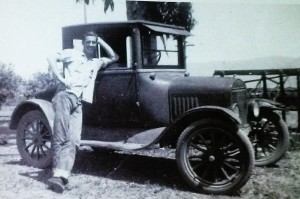 In the summer of 1947, Judge Jerry Kettmann, then just known as Jerry, would lease hay land from Grandma Mary (Vollmer) Kettmann. It was Jerry’s idea to make it rich that summer and buy a convertible to take out coeds from San Jose State. This same model T, pictured here with Jerry taken over that summer, pooped out in the middle of the road off San Fernando and 4th Street near the University. Jerry called his cousin to help push the car out of the roadway and into the gas station it pooped out yards away from. Jerry Kettmann would sell off a nearly paid-off tractor to cover his losses and pay his grandmother back that summer.
In the summer of 1947, Judge Jerry Kettmann, then just known as Jerry, would lease hay land from Grandma Mary (Vollmer) Kettmann. It was Jerry’s idea to make it rich that summer and buy a convertible to take out coeds from San Jose State. This same model T, pictured here with Jerry taken over that summer, pooped out in the middle of the road off San Fernando and 4th Street near the University. Jerry called his cousin to help push the car out of the roadway and into the gas station it pooped out yards away from. Jerry Kettmann would sell off a nearly paid-off tractor to cover his losses and pay his grandmother back that summer.
George’s great grandson and Clem’s grandson, Judge Gerhard J. Kettmann, was born in 1926 in Los Gatos but would soon relocate to his father’s Evergreen homestead. As a boy, Jerry would attend Evergreen Elementary School, then Roosevelt Middle School and San Jose High School. Kettmann recalls family get togethers with the Chaboya family as a child. Jerry would throw apricots like snowballs, run through vacant mine shafts and sleep in homemade treehouses in Evergreen. Judge Kettmann is a huge fan of flying, a fondness he developed on an aircraft carrier in World War II. Kettmann’s father and grandfather could’ve told him tales of Montgomery’s pioneer flights from their own experience.
After serving in the Navy in World War II, Jerry Kettmann later worked in the railroad as a fireman, at the Baron-Gray Packing Company packing fruit and then at the Post Office downtown before attending SJSU for Aviation Engineering then Business and Economics. Sadly, young Jerry’s 1947 dream of striking it rich quick would never be realized.
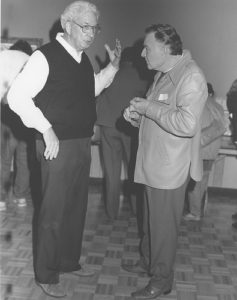
 The Honorable Judge Jerry Kettmann was accepted to Stanford Law in 1953 but instead attended UC Berkeley, where he graduated in the upper third of his class. Judge Kettmann began working as a Trust Attorney for Wells Fargo, but left to pursue trial law with the District Attorney’s Office. Though Judge Kettmann is partial to Civil Law, he told me about 85% of the cases he saw on the bench were criminal cases. Judge Kettmann would oversee cases at the height of the Civil Rights movement, even appearing in front of an Angela Davis case. Rioters would shout things and try to frustrate Judges. It wouldn’t work on Judge Kettmann, though. He removed their signs and have them properly tagged by court officials as the defending attorney tried including them as evidence. Judge Kettmann would find himself arbitrating through the later part of his career.
The Honorable Judge Jerry Kettmann was accepted to Stanford Law in 1953 but instead attended UC Berkeley, where he graduated in the upper third of his class. Judge Kettmann began working as a Trust Attorney for Wells Fargo, but left to pursue trial law with the District Attorney’s Office. Though Judge Kettmann is partial to Civil Law, he told me about 85% of the cases he saw on the bench were criminal cases. Judge Kettmann would oversee cases at the height of the Civil Rights movement, even appearing in front of an Angela Davis case. Rioters would shout things and try to frustrate Judges. It wouldn’t work on Judge Kettmann, though. He removed their signs and have them properly tagged by court officials as the defending attorney tried including them as evidence. Judge Kettmann would find himself arbitrating through the later part of his career.
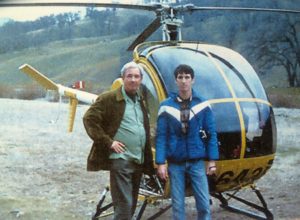 Judge Gerhard J. Kettmann would retire from the Law and write from his Evergreen home. The Kettmann family historian carries a tradition that began about 150 years ago in Evergreen. Judge Kettmann, though groomed on the farm, managed to keep up with the quickly changing times. This area of Evergreen, between Kettmann Road and Neiman Boulevard was developed beginning in the 1960’s. At 89 years young, Judge Kettmann’s enthusiasm is contagious. Really, I am so proud of my Evergreen people. It makes my job so easy when they are great and have great stories to tell! Here’s the artwork we have worked up for the Kettmann Family.
Judge Gerhard J. Kettmann would retire from the Law and write from his Evergreen home. The Kettmann family historian carries a tradition that began about 150 years ago in Evergreen. Judge Kettmann, though groomed on the farm, managed to keep up with the quickly changing times. This area of Evergreen, between Kettmann Road and Neiman Boulevard was developed beginning in the 1960’s. At 89 years young, Judge Kettmann’s enthusiasm is contagious. Really, I am so proud of my Evergreen people. It makes my job so easy when they are great and have great stories to tell! Here’s the artwork we have worked up for the Kettmann Family.